
We have entered the month of December, and therefore, everyone who lives and works on the internet is contractually obligated to tell you which books published in the last twelve months were their favorites. Alas, Literary Hub is no exception—but at least we collectively read a lot of good books this year. (Would you like to know about the older books we liked that we read in 2021? We’ve got a list for that too.) Read on for our favorites—which we heartily recommend for all your last-minute gifting, Omicron hibernation companionship, and holiday reading needs.
*
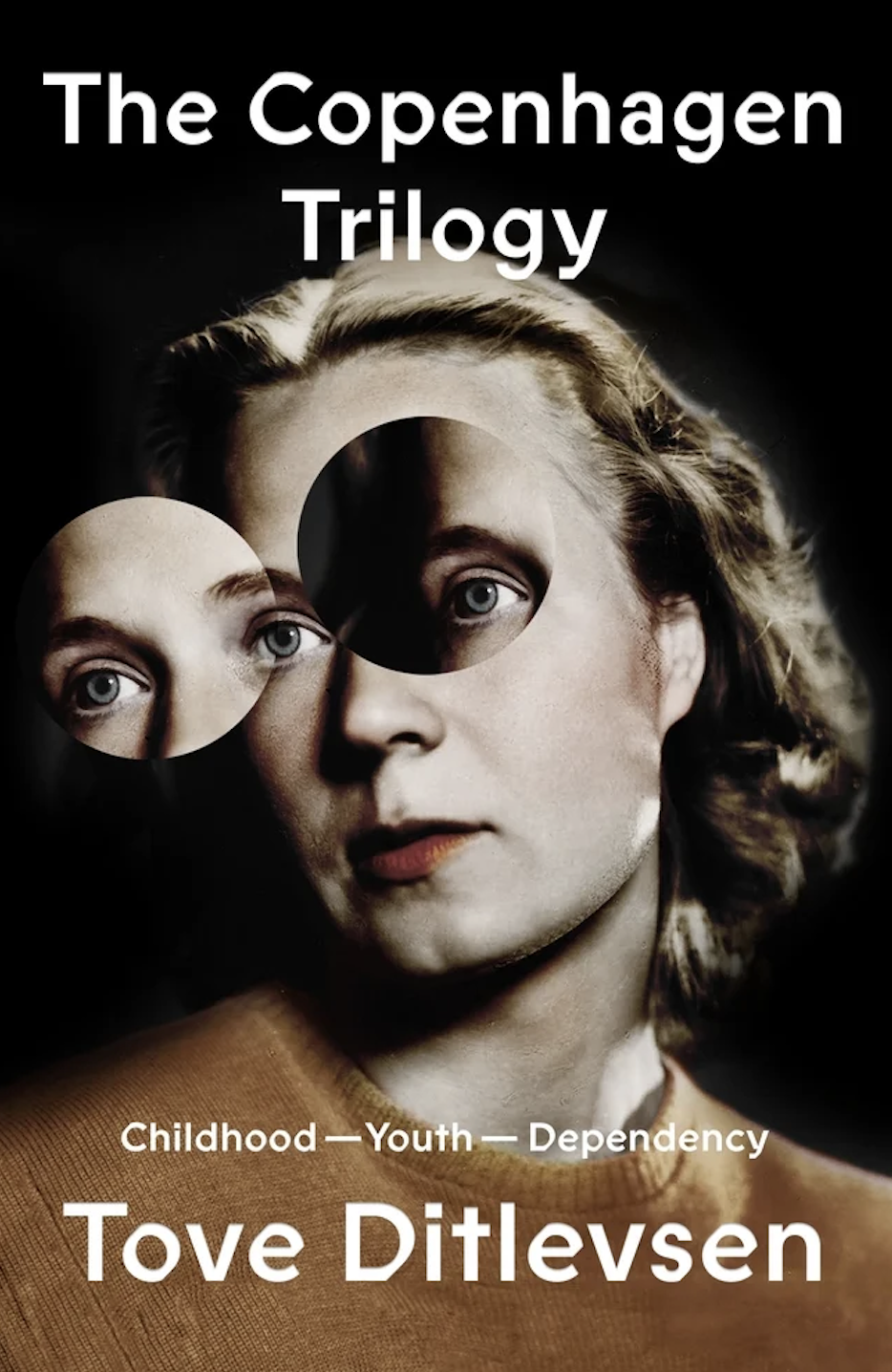
Tove Ditlevsen, The Copenhagen Trilogy
(Farrar, Straus and Giroux)
January was abuzz with these short novel-like-memoirs from Danish writer Tove Ditlevsen and for good reason: Ditlevsen’s cool intensity across these three books (Childhood, Youth, and Dependency) is utterly absorbing. As in the best of contemporary autofiction, Ditlevsen’s childhood is difficult, adults are idiotic and seemingly cruel, and she’s unbelievably wise (“The world doesn’t count me as anything…” she writes in Childhood.) Her difficult and politically volatile Youth (fascism, etc) coincides with her desire to be a writer and her early publication. In the last book, she becomes what she always imaged she would be—a writer, albeit frustrated, plus she’s addicted to Demerol and abused by her husband. Written with unflinching honestly, these are some of the most beautiful and hardest-to-read passages about addiction that I’ve ever come across. –Emily Firetog, Deputy Editor
Animal; cover design by Zak Tebbal & Alison Forner (Avid Reader, June)
Lisa Taddeo, Animal
(Avid Reader Press)
“I drove myself out of New York City where a man shot himself in front of me.” So begins Lisa Taddeo’s hypnotic, visceral novel about power, consent, and the cruelties of men. Joan, who has a history of dating emotionally unavailable partners, decides to rent a house in California’s mountain community of Topanga Canyon. However, in her attempt to outrun and outwit her trauma, Joan finds herself repeating old patterns. She starts a sexual relationship with 22-year-old River and befriends—or at least learns to tolerate— her grief-stricken, lecherous landlord Leonard. Yet in the grand scheme of things, these men are merely distractions. Joan has really left Manhattan behind to track down Alice, a beautiful yoga teacher who is a link to her former life. Joan is not meant to be a “likable” character. She describes herself as “depraved,” and expresses anger at the fact that people have called her a “sociopath.”
In fact, Joan thinks of herself as the total opposite—she is a woman who feels too much, who is swayed by the hot-blooded force of emotion. Violence is a recurring theme throughout the narrative and isn’t limited to physical acts of aggression. Joan’s bleak worldview depicts womanhood as a burden and female sexuality as an insatiable demon. By the end of the novel, Joan is not necessarily a brand-new person, but she has embraced the limitless abyss of her pain. This sense of understanding allows Joan to reclaim her narrative and reassess the self-made mythology surrounding her parents’ death. She may not be healed, but she is no longer afraid. Animal digs its claws into readers from the first sentence and refuses to let go until every ugly, dark secret has been laid bare. –Vanessa Willoughby, Assistant Editor
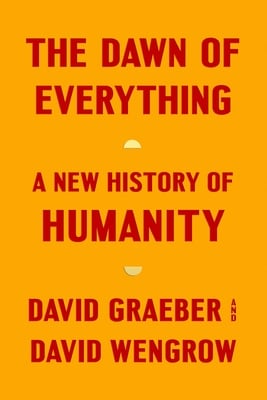
David Graeber and David Wengrow, The Dawn of Everything
(FSG)
Whether or not you’re a longtime fan of the late anarchist anthropologist David Graeber’s engagingly erudite examinations of social phenomena like debt or bullshit jobs (conveniently titled Debt and Bullshit Jobs), you will absolutely love The Dawn of Everything. Co-written with archeologist David Wengrow, DoE is a peripatetic survey of early humanity’s wide and varied attempts to organize itself, calling into question academic orthodoxies that so often treat human history as a straight narrative line that leads directly to late-stage, neoliberal capitalism. As if we didn’t make all this shit up and can’t make up some new, better shit.
From the seasonally migratory communities of the Fertile Crescent to the egalitarian foragers of 10th-century California to the proto-cities of the ancient Ukrainian steppe, DoE is a probing look back at the ways in which people—just like us!—have tried to live together (spoiler alert: heavily policed, top-down hierarchies are not inevitable systems for human coexistence). DoE is a work of history, but also offers us a way forward: we are the ones who have imagined this world into being, and maybe we can imagine our way out. –Jonny Diamond, Lit Hub Editor in Chief
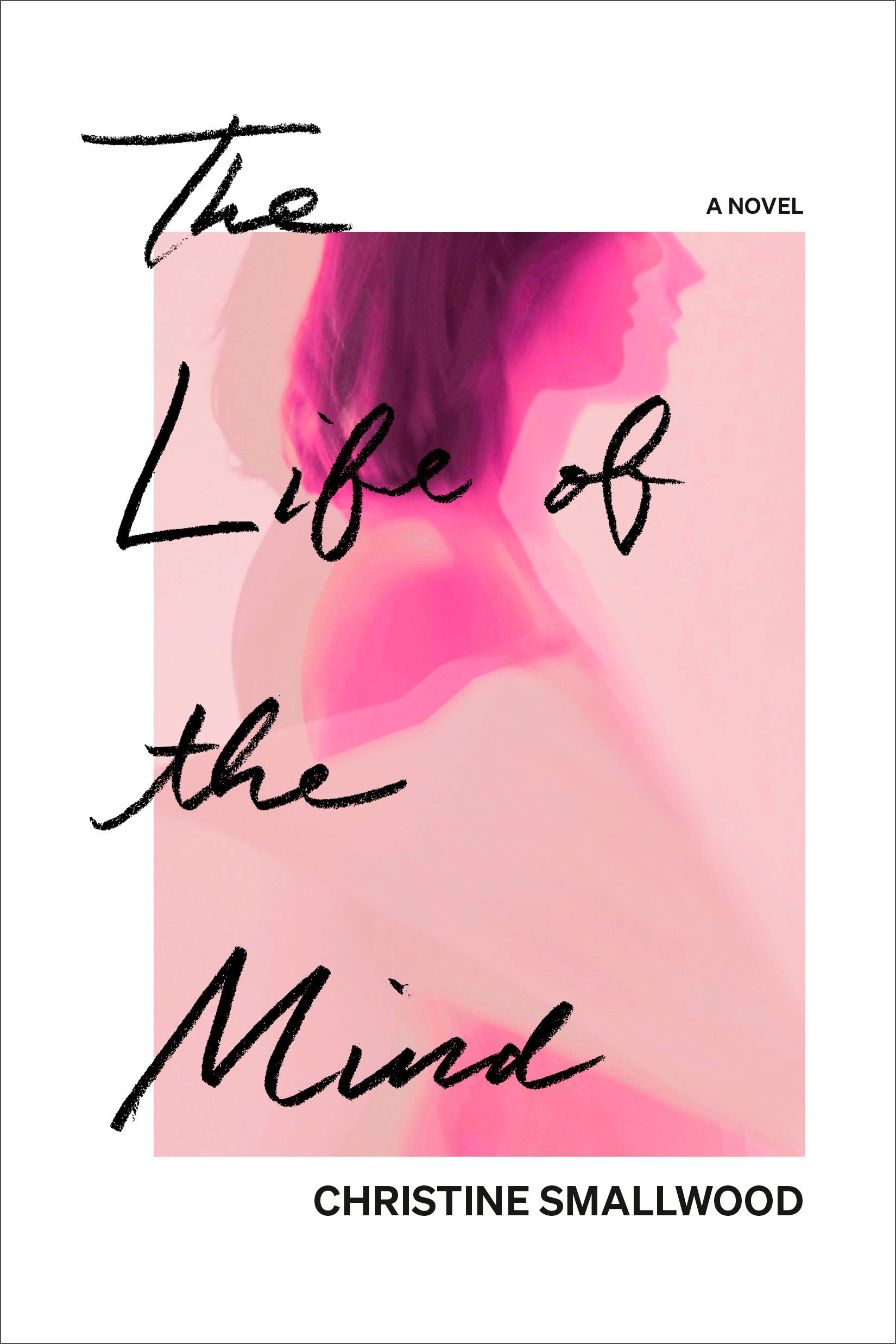
Christine Smallwood, The Life of the Mind
(Hogarth)
One of the purest pleasures I can experience while reading novels is also one of the rarest: when I read some detail—a character’s passing thought or observation, a way of relating one thing to another—that is deeply comprehensible, even familiar, despite the fact that I have never heard anyone say it out loud (or on the page) before. More plainly: I love it when characters in novels think the same terrible things that I think. This happens a lot in Smallwood’s precise debut The Life of the Mind, which is harrowing in some parts and hilarious in others, which is both deliciously cerebral and relentlessly physical, and which feels like a new kind of campus novel—one that’s actually honest. –Emily Temple, Managing Editor
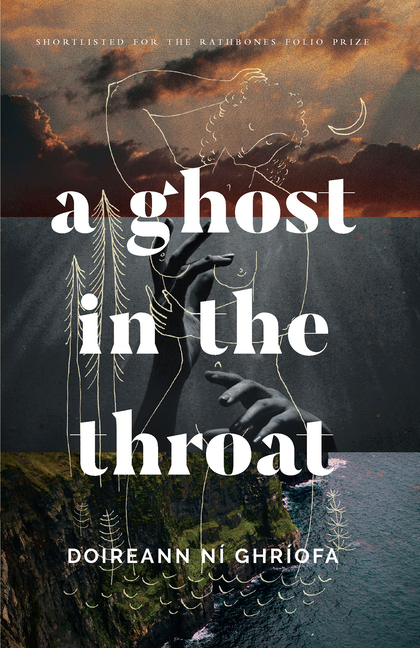
Doireann Ní Ghríofa, A Ghost in the Throat
(Biblioasis)
This is a female text, which is also a caoineadh: a dirge and a drudge song, an anthem of praise, a chant and a keen, a lament and an echo, a chorus and a hymn. Join in. So begins A Ghost in the Throat, Irish poet Doireann Ní Ghríofa’s extraordinary debut work of prose, which blends memoir, literary investigation, and autofiction to create something wholly unique and utterly bewitching. In 18th-century Ireland, a pregnant noblewoman named Eibhlin Dubh Ní Chonaill arrived at the scene of her husband’s murder and drank handfuls of his blood as he lay dying. She then composed an epic Irish language poem, “Caoineadh Airt Ui Laoghaire”—an ode to her slain beloved. 250 years later, Ní Ghríofa, a mother of four children under the age of six, commits herself to translating the poem and excavating the long-lost details of Ní Chonaill’s life. The result is mesmeric journey into the lives of two remarkable women—their art, suffering, sacrifices, ecstasies, transcendence—bound together across time. –Dan Sheehan, Book Marks Editor in Chief
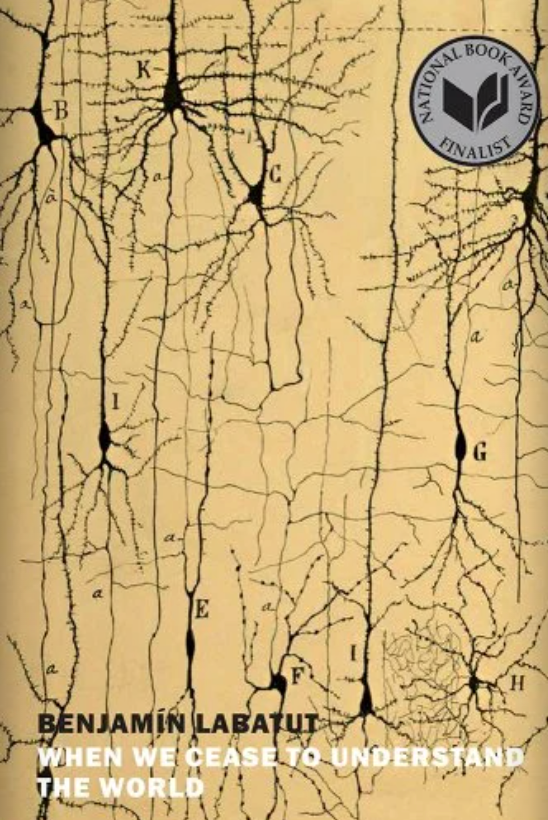
Benjamin Labatut, When We Cease to Understand the World
(NYRB)
It is safe to say this might be the “word of mouth” breakout success of the year (not often does a translated, genre-defying, contemporary NYRB title break into the New York Times 10 Best of the Year). Translated from the Spanish (Labatut is Chilean) by Adrian Nathan West, reading the first few paragraphs of When We Cease to Understand the World is like encountering a new intoxicant, with all its attendant thrills and shivers—and the uncertainty about where, exactly, things might lead.
In what is essentially a fictionalized account of the real lives of a miscellany of 20th-century scientific giants (some famous, some less so), Labatut wades through the murky waters of human genius, finding there the darker implications of discovery, for society and scientist alike. Reading the inner lives of the likes of Fritz Haber, Werner Heisenberg, and Erwin Schrödinger—rendered by Labatut with the same kind of metaphorical heuristic so often employed to reveal truths about theoretical physics—one is left almost breathless by the grim consequences of all our endless wonder. There’s a reason this hybrid novel-biography has left its mark on nearly everyone who’s taken a taste. –JD
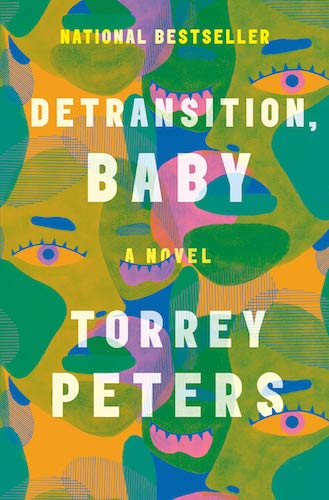
Torrey Peters, Detransition, Baby
(One World)
Because I spend too much time on the literary internet, I have developed a mild intolerance to much-hyped books. The more ubiquitously raved about a book is, the less inclined I am to read it. In the case of Detransition, Baby, my reticence was unjustified. I am delighted to add to the chorus of raves. Torrey Peters’ debut follows three characters—Reese, a trans woman who longs to be a mother; her ex, Ames, who is trans but no longer does trans, and lives as a man; and Katrina, Ames’ boss who becomes pregnant with his child—as they attempt to construct a queer parenting triad. Peters’ characters are so engaging that the premise serves mostly to give them room to exist (and in fact the flashback scenes were my favorites), and her prose is sharp and alive and very, very funny. Detransition, Baby was a blast to read, and I suspect Peters’ compassionate, nuanced portrayals of womanhood and identity will remain with me for a long time. In short: believe the hype. –Jessie Gaynor, Senior Editor
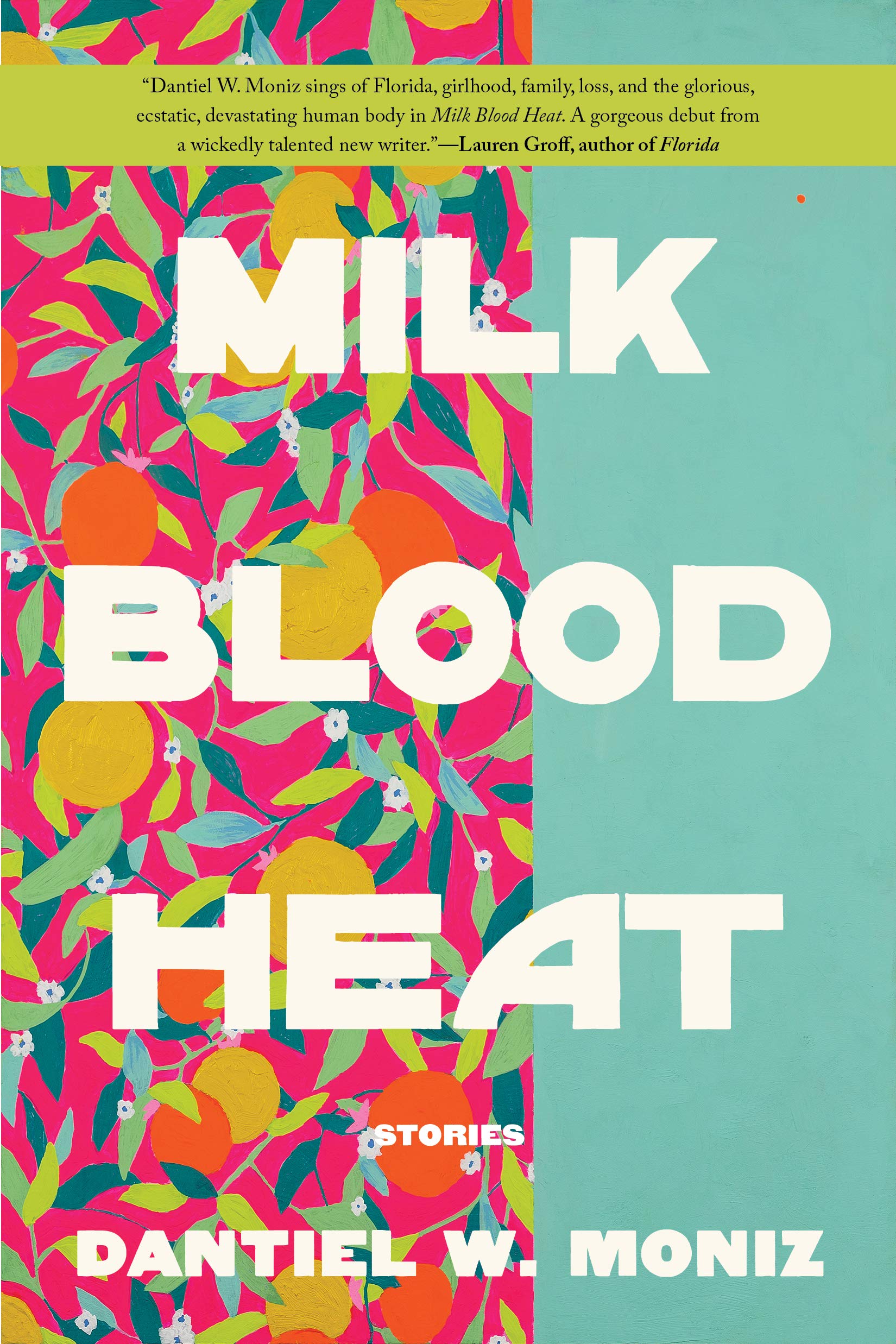
Dantiel W. Moniz, Milk Blood Heat
(Grove Press)
Dantiel W. Moniz’s Milk Blood Heat was the first book I read in 2021, and its stories have stayed with me through the year. It’s honestly one of the best collections I’ve read in a long time. Each character teeters on their own personal precipice. In the titular short story, a teenager ruminates on her relationship with her white best friend when a tragedy strikes. In “Tongues,” in a nod to The Scarlet Letter, a young woman is vilified by her religious town for refusing the inappropriate advances of the pastor. Milk Blood Heat is such a perfect name for this collection. It hints at a few threads—motherhood, family, violence—set amidst a burning Floridian landscape. There is urgency here.
Moniz gives body to the amorphous themes of literary fiction. This is a collection composed of viscera. (In “Feast,” a mother is haunted by the body parts of her unborn child.) Life’s injustices—small and large and particularly directed at young Black women—seep into the pages of these stories. But there is joy, too. In “The Hearts of Our Enemies,” readers might recognize the familiar plight of the smelly-school-lunch. A peer tells her that her meal resembles body parts, which she parrots to her mother, who gleefully responds, “But they are! […] And if anyone bothers you, you tell them, ‘In my house, we eat the hearts of our enemies.’” Don’t you just love that? Don’t you wish you had had that courage as a kid? In “Outside the Raft,” a nine-year-old thinks of the summer spent with her cousin: “We spoke a secret language, and we always understood each other.” That inseparable bond buoys the story. Together, they wonder about their shared fate: “We wondered why we weren’t born silver-scaled fish, instead of black girls with brown eyes and stick insect legs.” In a later passage, they stick their hands out of a moving car and are described as “eagles after all.” That’s the thing about Moniz’s writing: the characters occupy so many planes of existence. There is always the magic sliver of possibility lingering. Her sentences crackle and surprise; the language and everything inside it feels alive and new. –Katie Yee, Book Marks Associate Editor
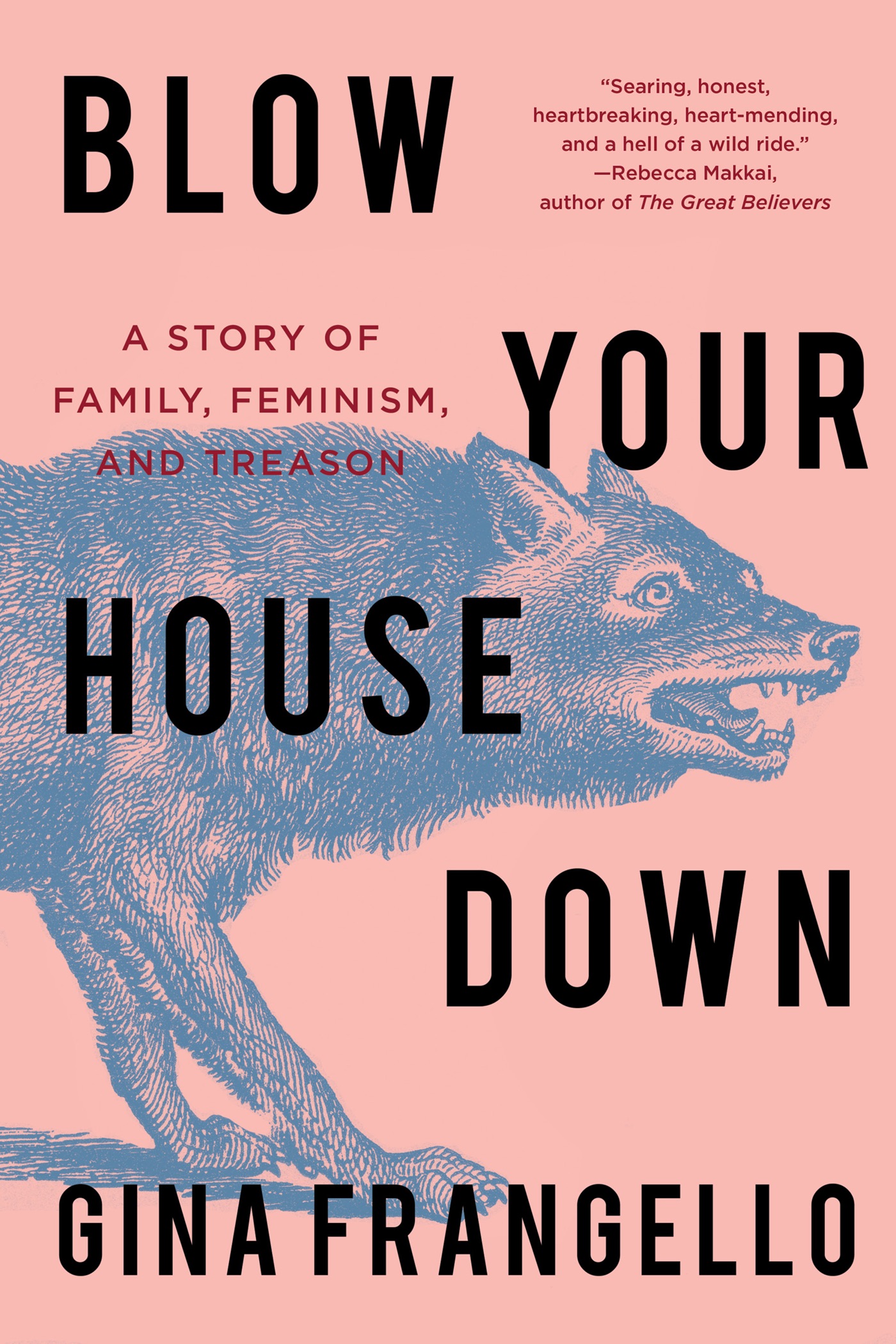
Gina Frangello, Blow Your House Down
(Counterpoint)
I’ve never been a fan of describing memoirs as “confessional” (hello, casual misogyny!), but I’ll allow for its use as a noun here—that is, the place where confession is delivered and received. I felt the weight of that exchange while communing with Gina Frangello’s memoir, ostensibly a story about infidelity (and the very real pain it can wreak on a family), but more deeply about violence and rage, girlhood and loss, and the monumental task of reclaiming one’s life. –Eliza Smith, Audience Development Editor
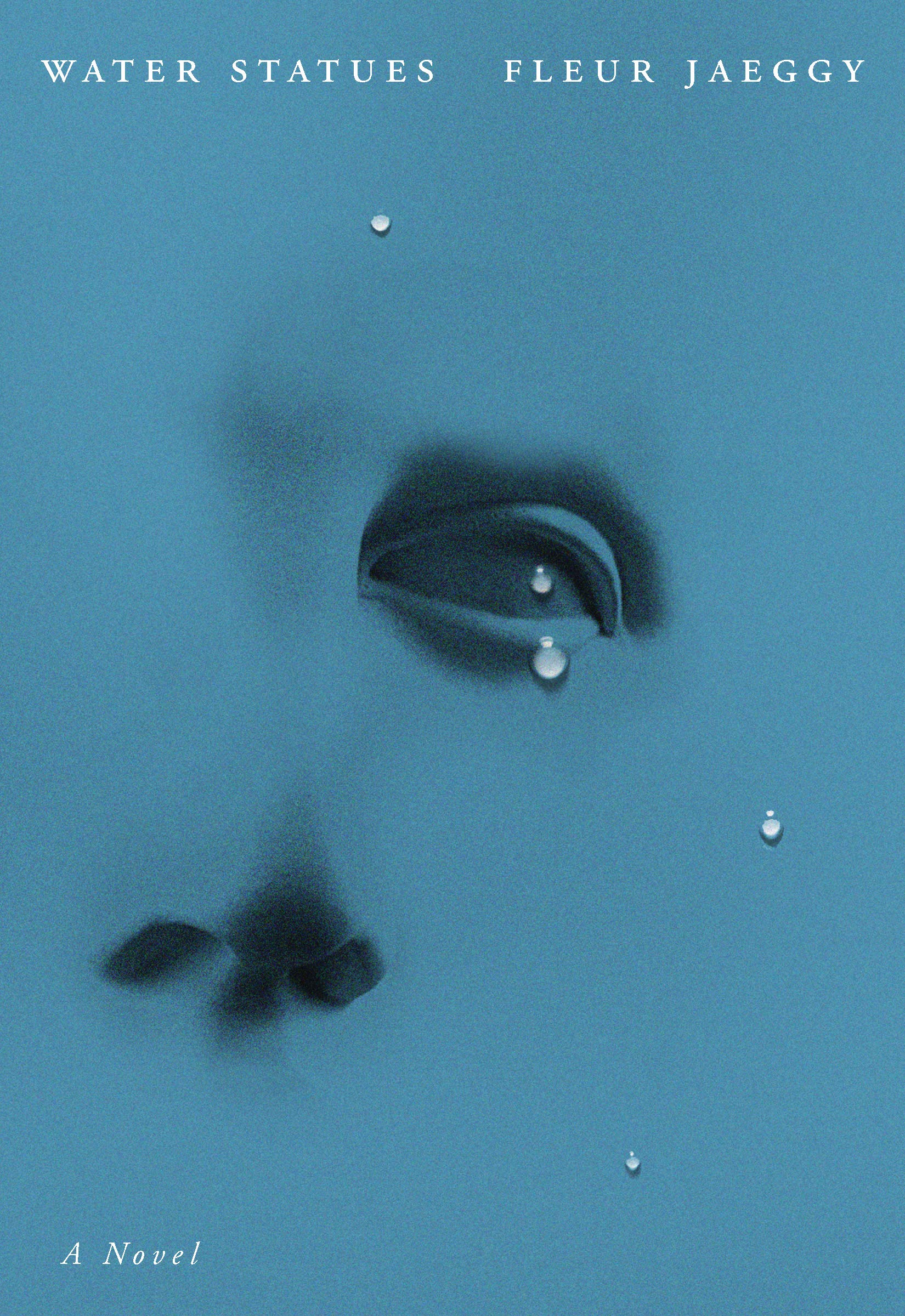
Fleur Jaeggy, tr. Gini Alhadeff, The Water Statues
(New Directions)
Part novella, part play, all water. Jaeggy’s most book to be translated into English begins with Beeklam and the statues he keeps in his villa’s flooded basement, and quickly unravels to a band of characters more connected to the villa than they are to each other. They spend their days looking out toward the sea, monologuing about broken family bonds, and loss and wreckage. It’s one of those books that asks you to plunge not quite into the plot, but the language—the way it moves and structures itself throughout. If the book’s binding element is the villa, then each sentence feels like a room; in texture and in dimension, Jaeggy’s sentences are capacious and opulent. She writes, “In the summer, the landscape was bright, even cheerful; but from September to March, at sunset, with strong winds and gurgling waves washing along the mossy floor, the place conjured only dead sailors and shipwrecks.” And lurking underneath it all is the sense of something ominous—you almost expect it to erupt and splash across the page, but it never does. Instead, it pulls you along toward the end, and entices you to start again from the beginning. –Snigdha Koirala, Editorial Fellow
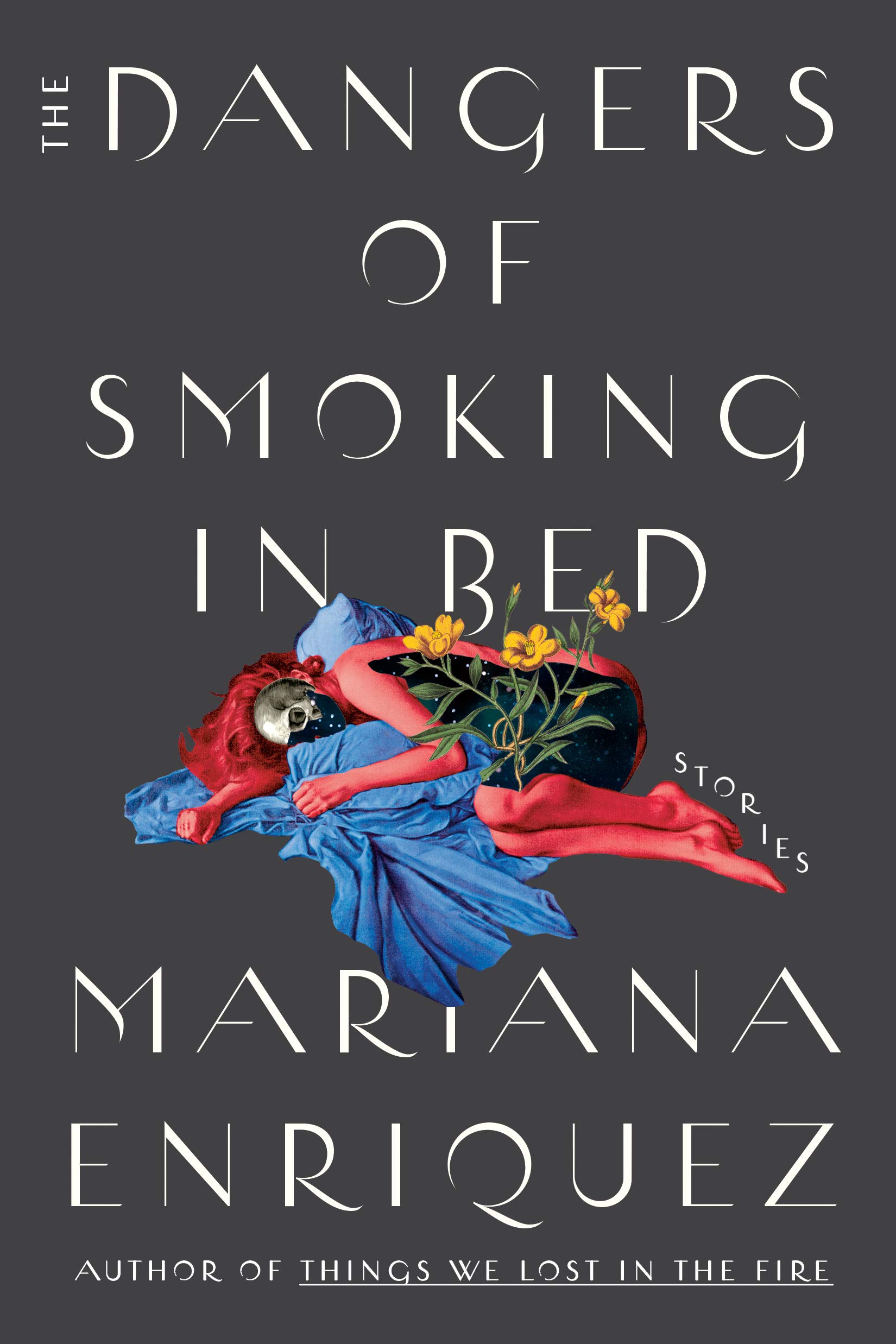
Mariana Enriquez, tr. Megan McDowell, The Dangers of Smoking In Bed
(Hogarth)
Mariana Enríquez’s newly translated 2009 collection is sometimes surreal, sometimes grittily realistic, but always unsettling. These stories catalog the consequences of repression: repressed resentment, repressed trauma, repressed history of political violence. Rotting babies crawling out of backyards, women getting horny for the human heart; there’s enough here to please genre enthusiasts. But Enríquez would say that some of the horror present in her stories is more everyday than invention: “Readers get horrified when they read one of my stories, with a child that lives in the streets, for example, but the truth is that they see children like that everyday. Many of them, sleeping in doorways, hungry, filthy,” Enríquez told Lit Hub. “But when they read it, they ask how can I go so far. The truth is, I don’t go far at all.” –Walker Caplan, Staff Writer
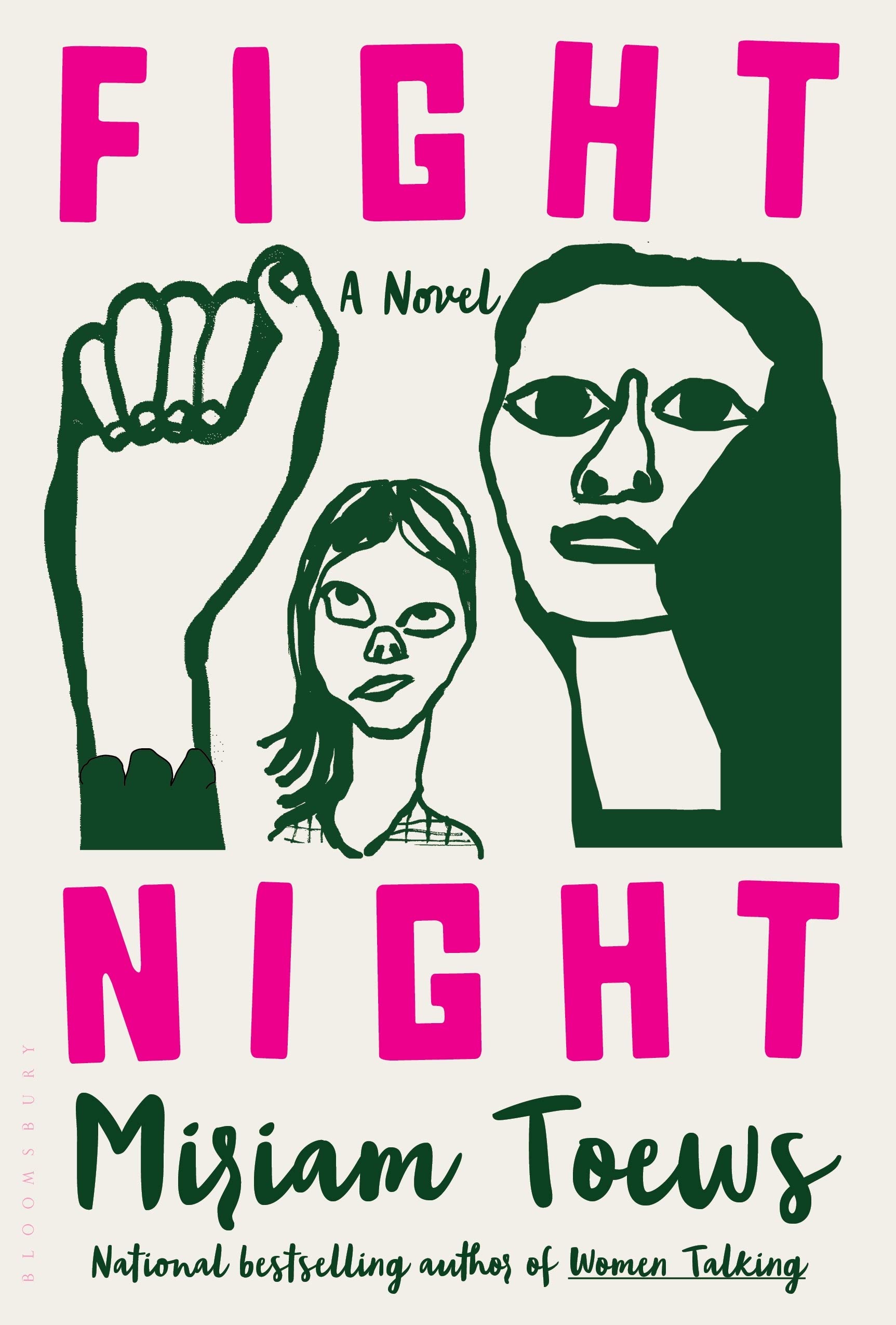
Miriam Toews, Fight Night
(Bloomsbury)
Honest to God, I do not know how Miriam Toews does it. She’s back with another stunner of a novel in the same universe as All My Puny Sorrows—that is, Miriam Toews’ lived universe of complicated, joyful, dark, hilarious, and resolutely strong women. When I first read All My Puny Sorrows, it struck me as the book of her life, and thus, impossible to follow. (In this list I also write about Claire Vaye Watkins’ I Love You But I’ve Chosen Darkness, which feels like another book of this kind. Watkins gets to the heart of what this means by referring to her “big gnar,” as in, the gaping wound of her life, the loss of her mother, around which much of the novel revolves. For Toews, her wound is the loss of her sister and father to suicide.)
But Toews has not said all there is to say, even in the perfect All My Puny Sorrows. Fight Night is told from the perspective of a nine-year old girl, Swiv, who lives with her mother and grandmother, Elvira. Her mother is pregnant, and angry, prone to outbursts and tears, and her grandmother is aging, and hilarious, and is Swiv’s partner in crime, home-school teacher, and constant companion. Elvira may not know much about, say, math, but what she does know is how to find joy in the face of unspeakable grief. In both books, AMPS and Fight Night, Toews manages an impossible balance of comedy and tragedy. In both, there is a member of the narrator’s family whose longing for death defines their whole life. Life can be dark for us all at times, but Toews puts it all into perspective. And what is most remarkable about this universe is that Toews can always see the light through the darkness, and with grace and tenderness and humor, tells how to live with it, really live. –Julia Hass, Contributing Editor
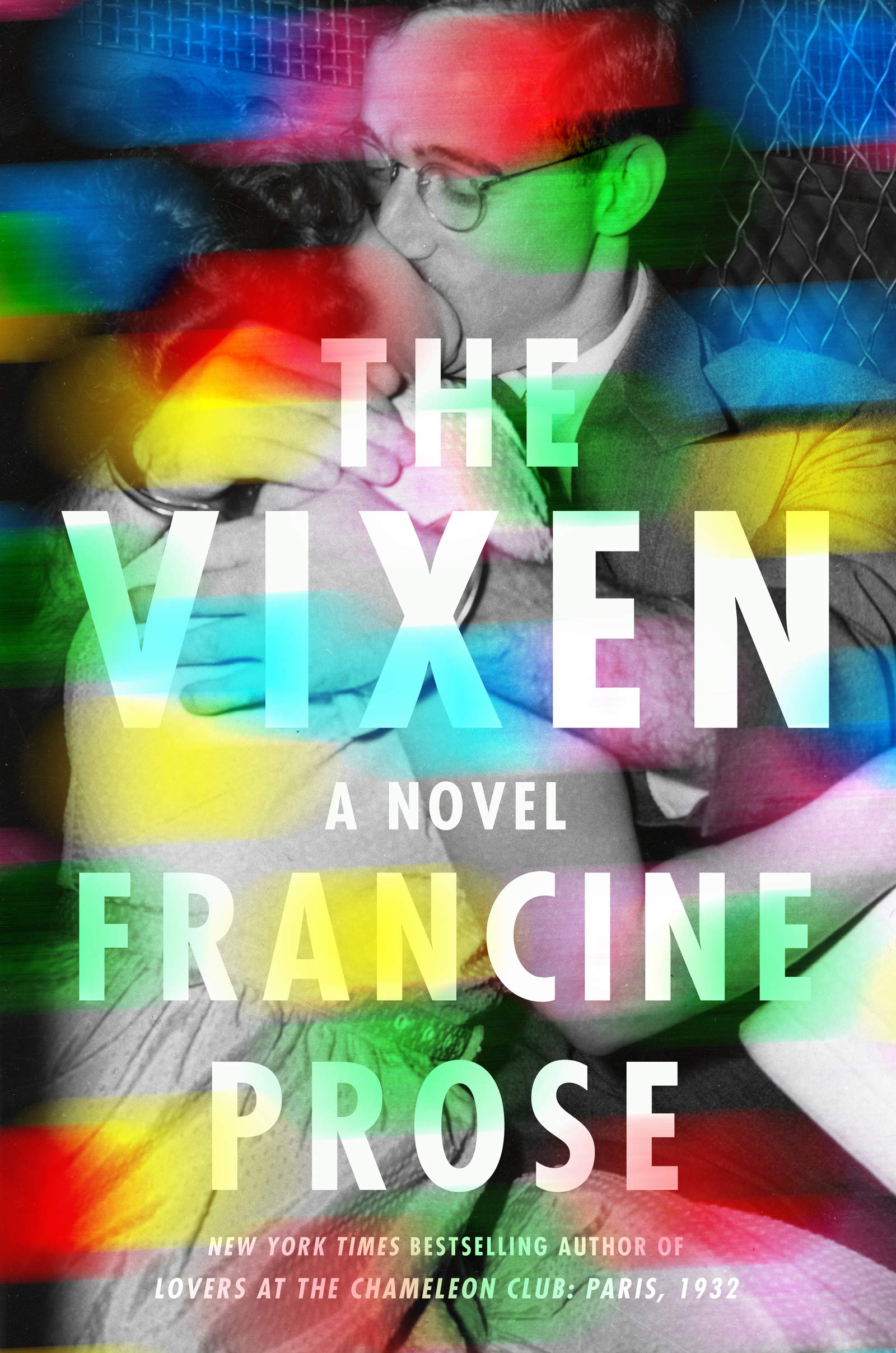
Francine Prose, The Vixen
(Harper)
A literary caper is a rare and beautiful thing, and The Vixen is a splendid one. Simon Putnam, a (dubiously) up-and-coming young editorial assistant in Cold War-era New York is given the daunting—both morally and editorially—task of making a tasteless, terrible potboiler about the exploits of sexy spies “Esther and Junius Rosenstein” slightly less terrible. (The novel opens on the executions of the real Ethel and Julius Rosenberg, which Simon watches with his parents from their Coney Island living room.) As befits a story that orbits spies, Simon begins to suspect that the motives of his colleagues are not as they seemed, and Prose rolls out every twist with relish (though perhaps not quite as much relish as she reserves for the excerpts of the potboiler, which are delightfully awful). –JG
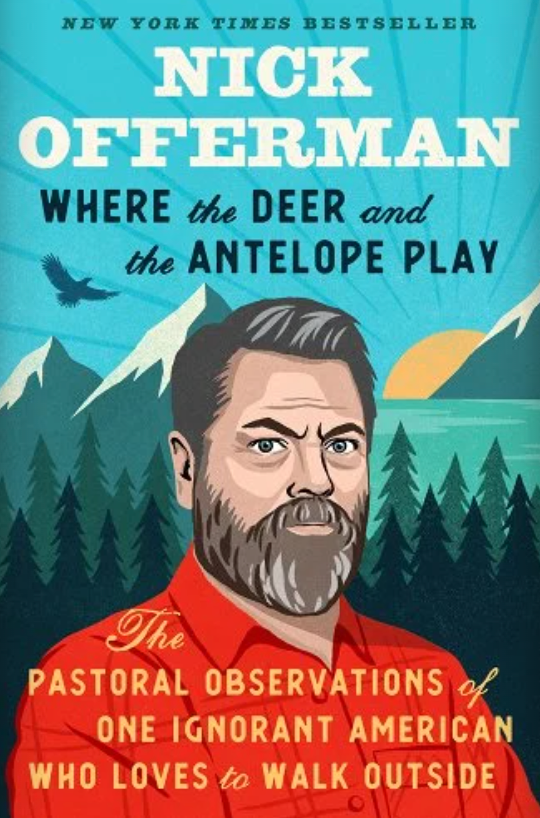
Nick Offerman, Where the Deer and the Antelope Play
(Dutton)
I have always deeply enjoyed Nick Offerman. Whether as the gruff, lovable Ron Swanson on Parks & Rec, or as the handy co-host of Making It, his wry and deadly Midwestern comic temperament is right after my own air-dried heart. And yet, as a (self-)important man of contemporary letters (lol), I was skeptical about Offerman’s essayistic memoir, Where the Deer and the Antelope Play, which is billed as “the pastoral observations of one ignorant American who likes to walk outside.” Fuck was I wrong. Structured in three parts, Offerman’s broader project seems to be reconciling what we think of as old-fashioned American virtues—manual labor, working the land, “freedom”—with the frequently toxic ways they manifest as a subset of contemporary masculinity.
Despite the fact I am 100 percent the target audience for this book (I own a router, I like the woods, I am an old labor lefty), I was nonetheless surprised at how deep Offerman goes on the source material behind the ideas he’s trying to unpack. Not only do we get thoughtful readings of old favorites like Aldo Leopold and Wendell Berry, but Offerman introduces the writing of Indigenous Australian Bruce Pascoe to the mix, whose 2014 Dark Emu should be required reading for any settler-colonial society (also, Mr. Offerman—Nick, if I may—I highly recommend Robin Wall Kimmerer and David Treuer, if you haven’t already read them).
Most of the above comes in the second section of the book’s three parts, in which Offerman shamelessly attempts to join the family of beloved Cumbrian writer-shepherd James Rebanks. The first section, with genial echoes of Edward Abbey, is built around a hike through Glacier National Park with George Saunders and Jeff Tweedy, and has already entered the contemporary Dad Rock canon; the final section follows Offerman and his wife Megan Mullaly as they pilot around America in an RV during a pandemic, meeting a wide assortment of people just trying to get from one end of the day to the other. But this is no Gen X Garrison Keillor bullshit: Offerman is a real social critic, balancing a deeply humane capacity for nuance with a moral rigor that demands we call out evil as we see it. For grumpy uncles everywhere. –JD
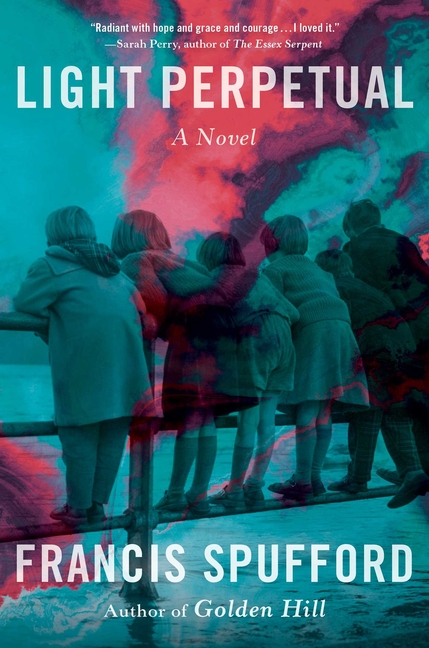
Francis Spufford, Light Perpetual
In 1944 in south east London a German V-2 rocket obliterated a Woolworth’s, killing 168 people. The prologue is a perfect vignette of the moment of impact: “Gone between one ten-thousandth of a second and the next, gone so entirely that it’s as if they’ve vanished into all that copious, immeasurable nothing just beneath the rickety scaffolding of hours and minutes. Their part in time is done.” But Spufford then imagines a timeline where five children—Jo and her sister Valerie, Alec, Ben, and Vernon—survive. Like Michael Apted’s Up series, Spufford checks in with these invented lives at different points as they age. Their stories might be extra-ordinary (school, careers, love, family), but Spufford’s storytelling is beautiful, paced, and engaging. Like all fictional characters, their lives are made up! When we are reminded that these are the lives of children who died, somehow unsentimentally, Spufford makes the case that all lives are inherently interesting if we look at them closely enough. –EF
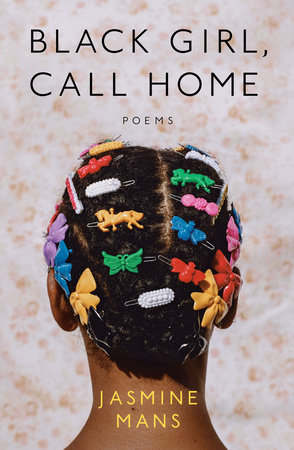
Jasmine Mans, Black Girl, Call Home
(Berkley Books)
In Black Girl, Call Home Jasmine Mans unpacks what it means to survive—and thrive—as a Black girl in a world that offers very few safe-havens. These poems aren’t necessarily for everyone; they speak directly to the multifaceted triumphs and challenges of the Black female experience. In “Momma Has a Hair Salon in the Kitchen,” Mans captures the kaleidoscopic array of tools and seemingly magical elixirs that are associated with Black haircare. She spotlights the versatility of Black hair while depicting the often painful price of adhering to cultural beauty rituals. Motherhood, what it means to be a daughter, memory, family inheritance, queer identity, and celebrity are also explored. Four poems examine the legacy of Whitney Houston. In “Whitney: Hologram,” Mans casts a critical eye on the exploitative second life of the singer, showing how fame turns Black women’s bodies into a commodity, even in death. Mans’s sparse yet effective style offers all of the swirling, thunderous emotions of a coming-of-age narrative wherein the past always informs the present. These poems are love letters and incantations, a map of hard-won love. –VW
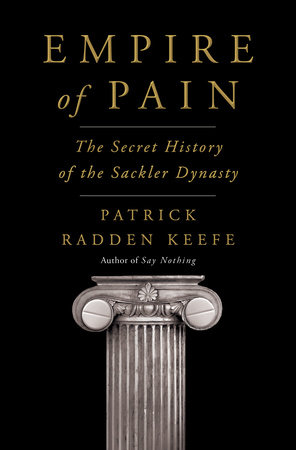
Patrick Radden Keefe, Empire of Pain
(Doubleday)
I listened to Patrick Radden Keefe’s prize-winning masterpiece Empire of Pain as an audiobook (ably read by the author), and despite the fact this allowed me to do other things (fold laundry, paint the living room) as I listened, not once did I have to pause and rewind. This is no small thing over the course of a nearly 600-page book, and is testament to Radden Keefe’s innate storytelling talents, whether he’s explaining the chemistry of an untested, painkilling opioid or how a billionaire might hide money in the Turks and Caicos. But even if Empire of Pain were a little dry, it would nonetheless be one of the most important books of the decade.
The empire in question is that of the now-infamous Sackler family, which is—as Radden Keefe lays out with forensic detail—almost singlehandedly responsible for the ongoing quarter-century opioid epidemic that has destroyed millions of lives around the world. And though it can be read as the indictment of a family and its massive crimes, Empire of Pain is also a cautionary tale of the many ways in which unchecked American ambition so easily curdles into arrogance, hubris, megalomania and, ultimately, evil. For those of you who’ve watched Succession (namechecked by Radden Keefe in the book), and balked at its cartoonish portrayal of the vain and buffoonish billionaire classes, just look no further than the second and third generations of the Sackler family. This is a group of deeply privileged people whose collective intelligence—such as it is—manifests entirely as self-interest, in what is nothing more than a degraded race to profit as much as possible from the pain of others.
This American horror story should be required reading. –JD
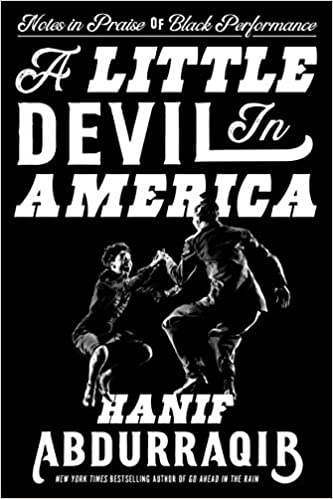
Hanif Abdurraqib, A Little Devil in America: Notes in Praise of Black Performance
(Random House)
Of Hanif Abdurraqib’s first book, The Crown Ain’t Worth Much—published by Button Poetry in 2016—Terrance Hayes wrote that the author “bridges the bravado and bling of praise with the blood and tears of elegy.” I encountered Abdurraqib first through this collection, and since then have been in awe of his boundless use of language, whether in poetry, criticism, or memoir. Here, he focuses on the history and heart of Black performance—the skill, passion, and rhythms that became the foundation for much of American culture—in an exploration that also calls upon his own coming of age. It’s gripping all the way through. –Corinne Segal, Lit Hub Senior Editor
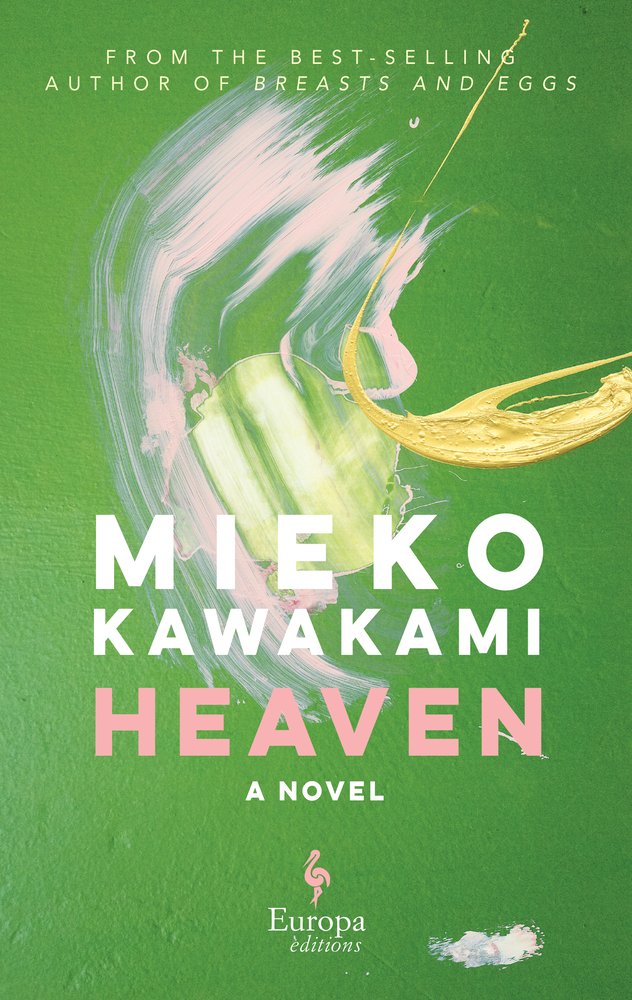
Mieko Kawakami, tr. Sam Bett and David Boyd, Heaven
(Europa Editions)
Mieko Kawakami’s second novel to be translated into English, on the heels of the wildly well-received Breasts and Eggs, is a slender, dark masterpiece: a black diamond of a book. Heaven is narrated by a young teenage boy with a lazy eye who is bullied mercilessly. The story begins when he receives a letter slipped into his desk, from a girl who is also the victim of bullying because she comes to school dressed in rags. (Kids are sometimes the worst, aren’t they? Warning: there is a particularly graphic scene halfway through that will leave your stomach churning.) There is something so beautifully vulnerable and tender about their relationship, which we see unfold through their letters to one another. Eventually, they muster up the courage to hang out in person. It is not easy to tackle the subject of a difficult home life, but through these two unforgettable characters, we get glimpses of the traumas that bind them. In lesser hands, this would be a didactic after-school-special, but in Mieko Kawakami’s (and Sam Bett’s and David Boyd’s), it is a quietly explosive testament to the parts of ourselves we preserve in times of crisis and the threads of connection we cling to from our lowest points. –KY

Maggie Shipstead, Great Circle
(Knopf)
This was my first Shipstead, but it won’t be my last. On its surface, Great Circle is a two-part narrative about Marian Graves, a midcentury “lady pilot” who disappears on a flight over Antarctica, and Hadley Baxter, a B-list actor trying to reboot her career by playing Marian in a biopic (think Kristen Stewart after Twilight). That’s enough description for a book cover, but when you get into the story, other characters rise to the surface, particularly Marian’s twin brother, Jamie, a painter who spends WWII as a war artist, and the villainous bootlegger who puts Marian in her first plane. At 608 pages, it certainly qualifies as a doorstopper, but I’d primarily describe it as a page-turner (I know, I know, the two don’t have to be mutually exclusive!). At any rate, I’m very excited for the TV adaptation that’s already in the works. –ES
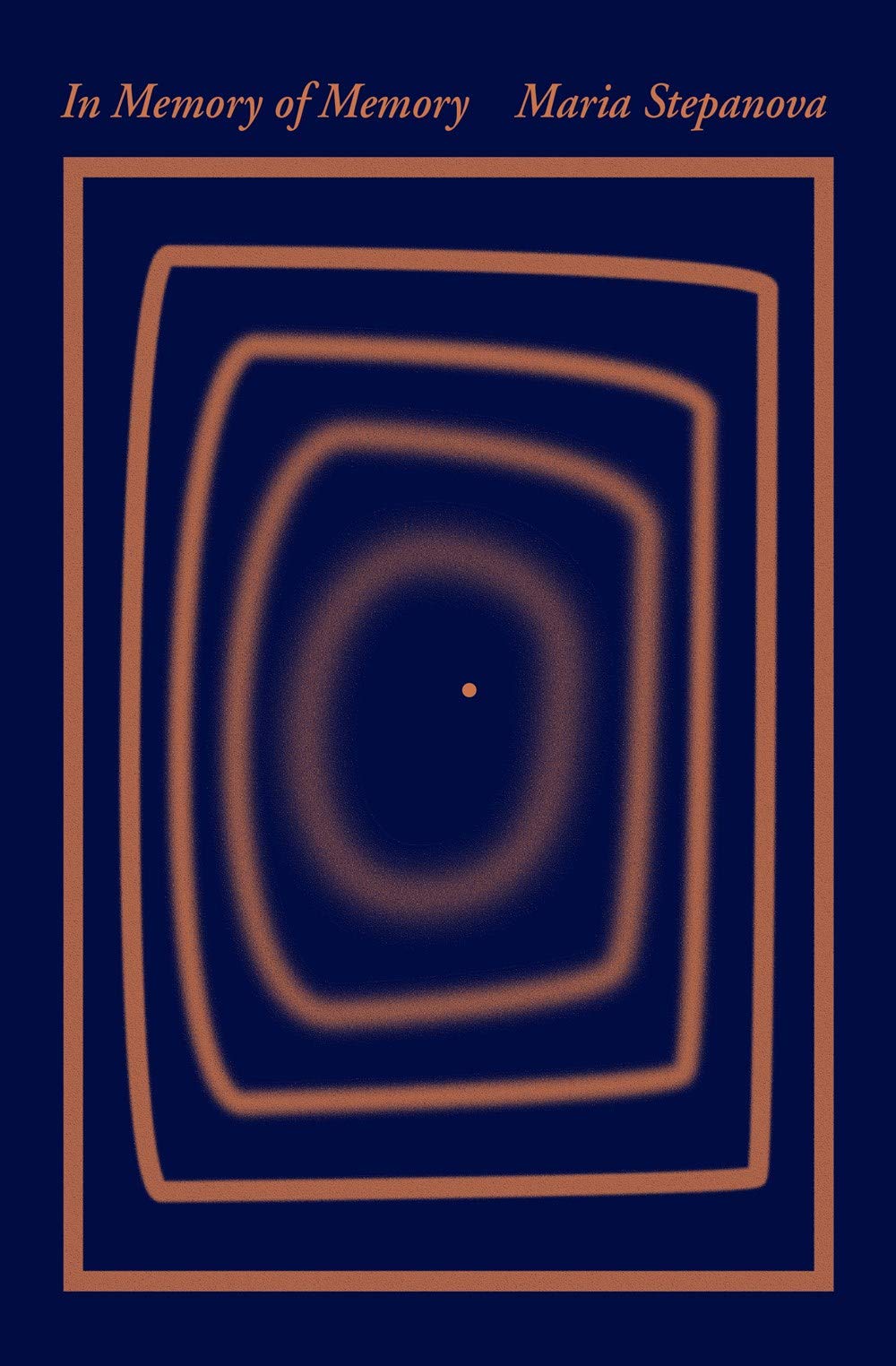
Maria Stepanova, tr. Sasha Dugdale, In Memory of Memory
(New Directions)
The devil is indeed in the details when it comes to remembering. In In Memory of Memory, the narrator finds herself going through her late aunt’s apartment, finding old letters, photographs, and diaries. Breaking from fiction to memoir to essay to travelogue, the book reconstructs the story of a Jewish family surviving the many persecutions of the 20th century. In one of my favorite parts (in which the narrator sifts through her aunt’s diaries), Stepanova writes,
There was a minute and virtuosic avoidance of content—how she’d actually filled her hours. It might say ‘read,’ for example, but with no mention of what the reading material had been or what it had meant to her—in fact everything in her long and exhaustively documented life was the same. Nothing indicated what this life had been for, there was nothing about herself, nothing about other people, only fastidious details, the fixing of the passing of time with the exactitude of a medieval chronicler.
Grappling with the heaviness of details, and then holding them up to the light, Stepanova examines just how relentlessly the past shines through—how it haunts and follows us around, even when—especially when—we think we’ve closed the door on it. –SK
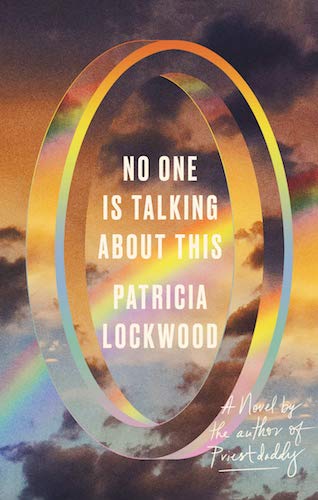
Patricia Lockwood, No One Is Talking About This
(Riverhead)
Patricia Lockwood’s debut novel starts as a hilarious and lyrical topography of Being Too Online. Through a protagonist who’s become internet famous (like the author herself), Lockwood maps the groupthink of memes of the last few years—caucasianblink.gif, Don’t Email My Wife, the time Chuck Grassley tweeted “PantsBurnLegWound.” The short, joke-dense fragments are already enjoyable; who else could get Twitter display names so right? (Her example: “henry higgins was an abuser.”)
But in the second half, when her sister’s unborn child is diagnosed with Proteus syndrome, she mostly logs off and her Internet-poisoned mind grapples with real grief. The same fragmented style is now trained on the IRL, and we see the prefab language of memes is an attempt to pin down the confounding, horrible, beautiful world. When an apropos meme pops into her head while receiving dire news from a doctor: “Whatever lives we lead, they do prepare us for these moments.” This loving, liturgical book is an ode to speech. For better or worse, the Internet is “the place where we sounded like each other.” –WC
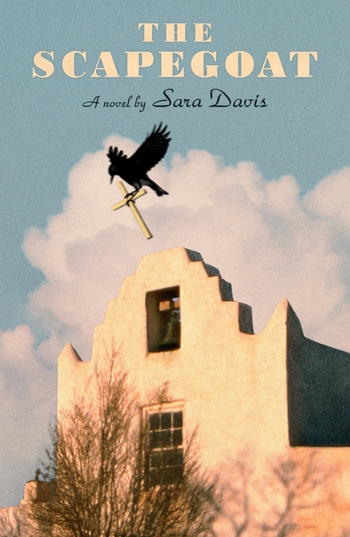
Sara Davis, The Scapegoat
(Farrar, Straus and Giroux)
Davis’ debut novel is a literary mystery—N works at a Stanford-like university and is haunted by the circumstances of his father’s recent death. A series of coincidences leads to a haphazard “investigation”—a cabal of academics, a hotel built on the site of genocidal Native American history—each move forward builds towards a menacing, perfectly plotted ending. I loved Davis’ cool, postmodern, genre bending novel. A little weird and brilliant marvel. –EF
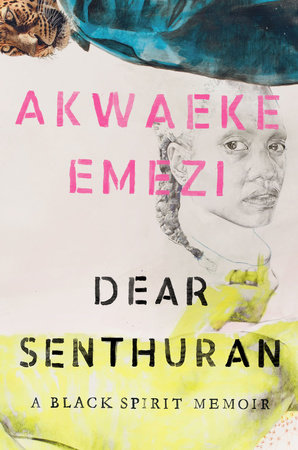
Akwaeke Emezi, Dear Senthuran
(Riverhead)
There are some writers who are blessed with the ability to make storytelling seem like a conjuring—a sublime act of spinning experiences into an emotional reckoning. Akwaeke Emezi is one of those rare writers and in their epistolary memoir, Dear Senthuran, their narrative voice is bewitching. They explore their childhood in Nigeria, carving space for themselves as a Black creative spirit, what it means to be ogbanje and a trans person, and death as regeneration. In a letter published on their website, Emezi explains the decisions behind the book’s structure: “This book is what I look like when I’m not translating myself to become accessible or legible, because here, I am already these things.” When writing with the intent to eventually be published, self-doubt can become debilitating. Second-guessing yourself and disregarding your instincts are common side effects.
The actual business of publishing can extinguish the confidence needed to take creative risks. Emezi’s memoir defies convention for the pursuit of artistic and spiritual freedom, a stubborn loyalty to the survival of self. They mold language to their worldview, finding tenderness in brutality. There are blistering moments of clarity as Emezi embraces their power and refuses to cower or conform to society’s expectations. For example, in “Mutilation (Dear Eugene),” they discuss the choice to modify their body and make a vow to honor self-enlightenment: “. . . Even when it means stepping out of one reality to be swallowed by another, I continue choosing to move toward myself.” Emezi’s lyrical prose is as transformative as fire and as cleansing as anointing oil. –VW
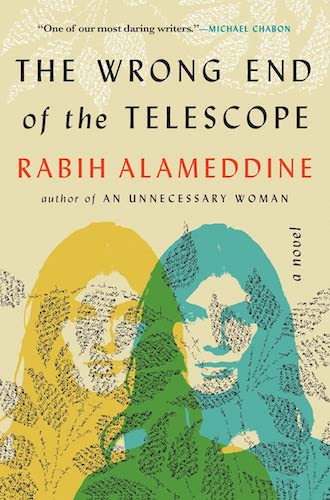
Rabih Alameddine, The Wrong End of the Telescope
(Grove Press)
I have an abiding love for Rabih Alameddine’s narrators. They’re always so richly imagined, so full of caustic wit, world weariness, and bone-deep humanity. Alameddine’s latest indelible guide is Mina Simpson, a transgender Lebanese-American doctor who, after a entreating phone call from a charismatic friend, arrives at the notorious Moria refugee camp on Lesbos to try and do some good and, hopefully, meet up with her beloved brother (the only member of her estranged family with whom she’s still in contact). Once there, Mina bonds with a tough-as-nails Syrian matriarch who is attempting to keep her cancer diagnosis a secret in order to secure refuge for her family. What’s truly remarkable about this novel, aside from its characteristically deft balance of humor and heartbreak, is Alameddine’s ability to grapple with both the unconscionable devastation and the maddening complexity of the ongoing refugee crisis without ever slipping into didacticism. –DS
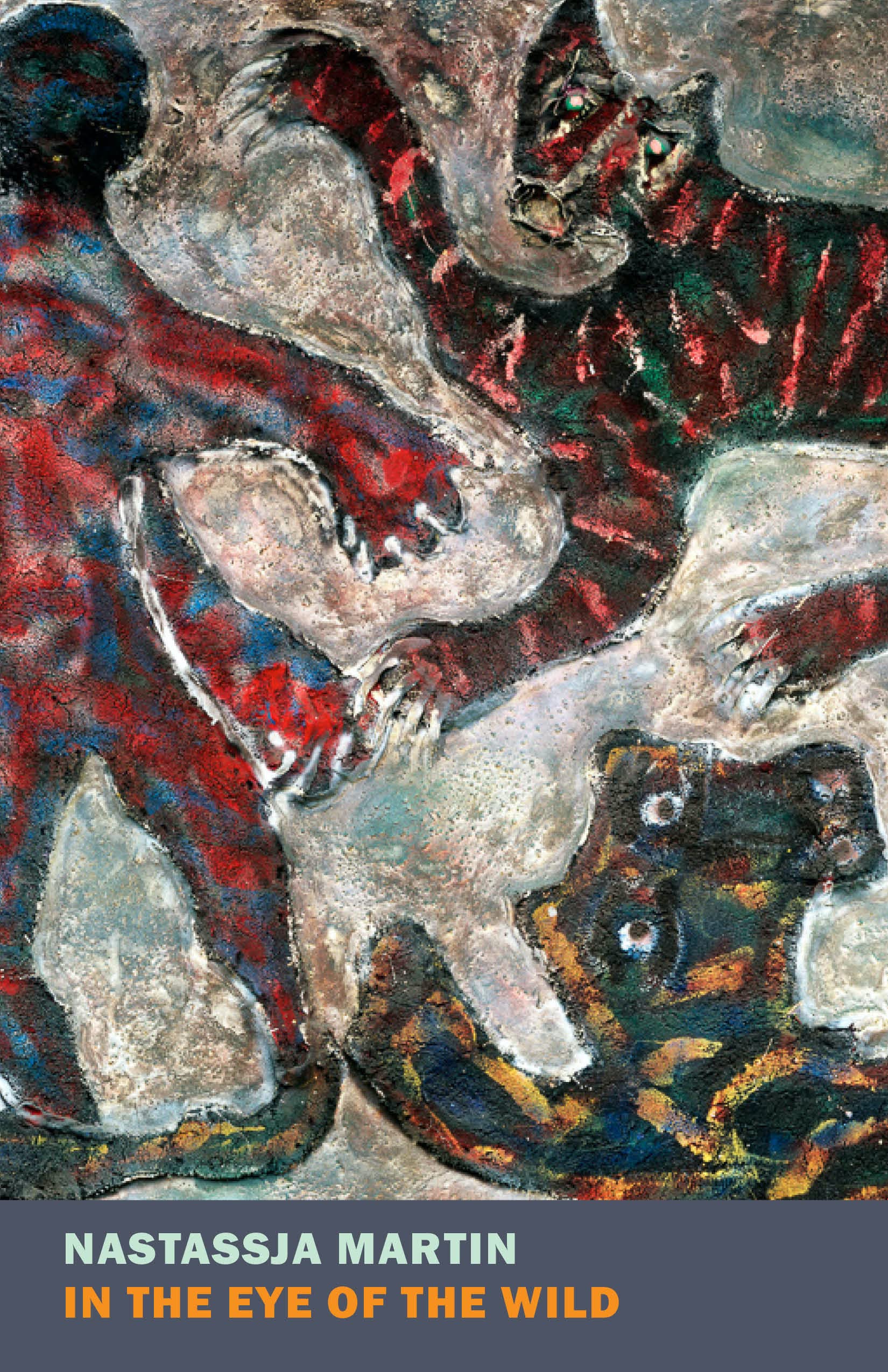
Nastassja Martin, In the Eye of the Wild
(New York Review of Books)
Nastassja Martin was a young anthropologist living and working with the Evens, an indigenous Siberian tribe living on the Kamchatka Peninsula of Siberia, when an encounter with a bear left her disfigured and clinging to life in a remote field hospital. This book covers the story of what followed that encounter: multiple surgeries as Martin navigates the tricky territory of medical care between Russia and her home country of France, the uncertainty of recovery, and a difficult emotional reckoning with her relationship to anthropological work. She also, in the process, grapples with the Even belief that, having survived a bear attack, a part of her identity itself has shifted: she is now a medka, or “half human, half bear.” In her healing, Martin shows a tenderness for herself and a respect for her human wildness that is moving to witness. –CS
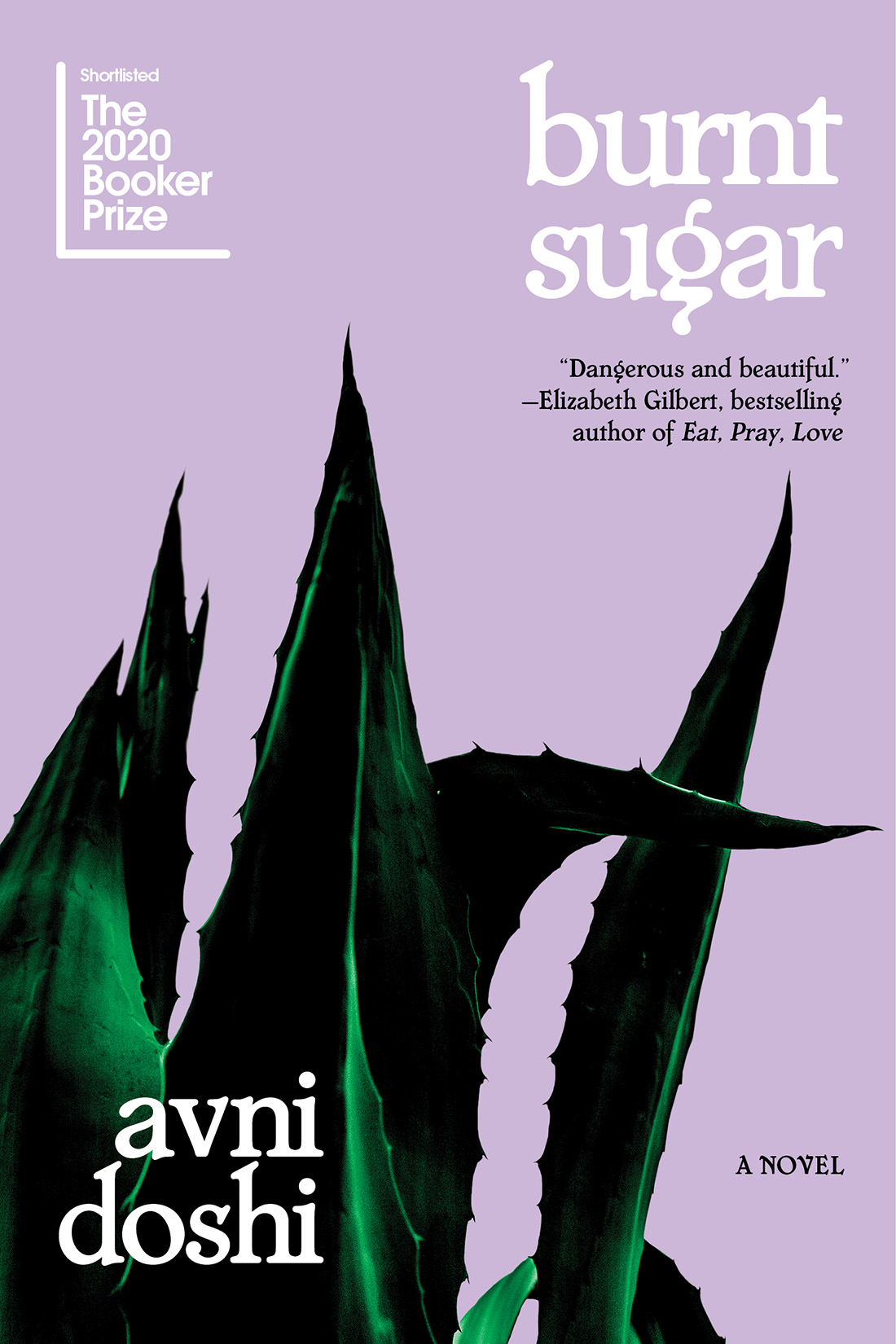
Avni Doshi, Burnt Sugar
(Harry N. Abrams)
It’s rare that I read a novel so outrageous in both form and content, without either one feeling overdone, or like an afterthought. Doshi’s prose is sensual at every turn, blistering even when it really doesn’t need to be; it feels almost like being in a fever dream (or a sugar-addled coma, perhaps). And the story too is audacious, a scalpel-sharp portrait of a mother and daughter and what I can only describe as their competing realities. I don’t want to say any more here, because the surprises work well in this novel, but suffice it to say that it is very good, and a book I will be thinking about for a long time. –ET
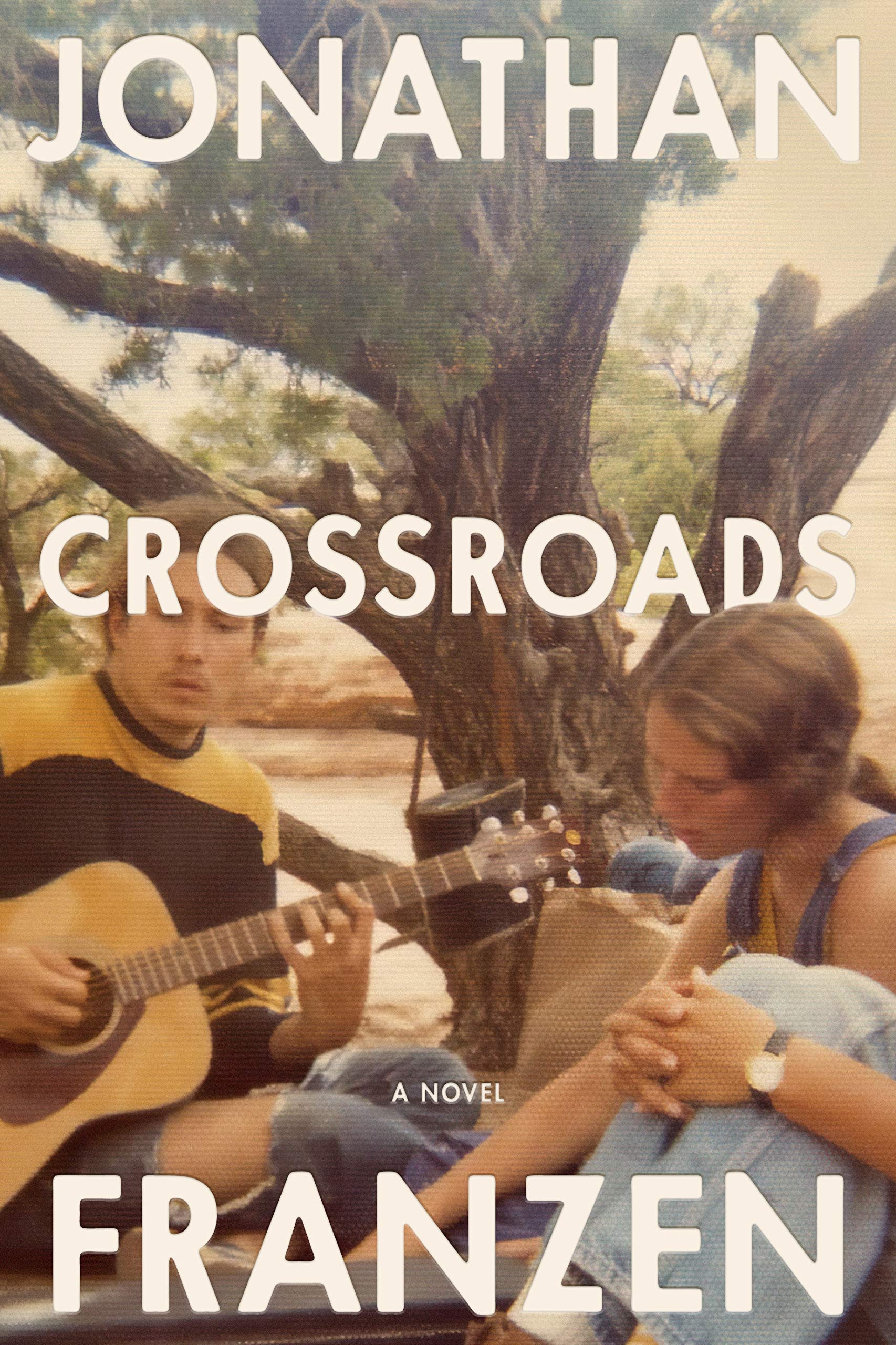
Jonathan Franzen, Crossroads
(Farrar, Straus and Giroux)
Jonathan Franzen is an expert chronicler of dysfunction, tracing the feather cracks of familial relationships and exploding them into spectacular collapse (and tentatively hopeful reconstruction). Crossroads tells the story of the Hildebrandts, a family in the suburbs of Chicago in the early ’70s whose individual crises orbit the question of how to be good. Franzen is at his best when he lets his characters guide his plots, and in Crossroads, he does exactly this. (See: the several scenes in which characters become uncomfortably stoned.) He has created a cast of compellingly flawed characters we have no choice but to love, if only because we can see how much they need it. –JG
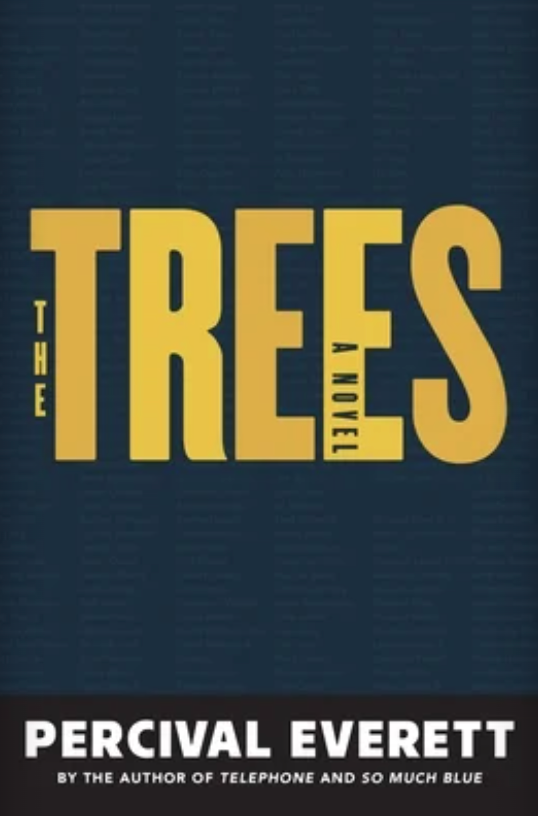
Percival Everett, The Trees
(Graywolf)
How can a book be one of the funniest things you’ve read all year, while also being the darkest thing you’ve read? I know it’s my job to unpack how, exactly, Percival Everett has managed this with The Trees, but the reader in me resists critical attempts to diagram his magnificent allegorical horror whodunnit, which follows a pair of Black Mississippian detectives investigating a wildly improbable series of grisly murders.
Set in the years immediately following the election of an openly racist president, The Trees begins with lurid focus on the murder of a poor, white man, whose precisely mutilated corpse is found next to the dead body of a young Black man. But then the Black body disappears from the morgue. And then it reappears at the murder of yet another particularly unpleasant white Southerner. And, wait, doesn’t the disappearing Black body remind of you someone?
As the violence escalates details begin to emerge of retribution on a grander scale, direct-action justice in the name of the thousands of victims of American racism: the lynched, the shot, the disappeared. Not to cheapen by way of comparison, but Quentin Tarantino absolutely wishes he could pull off this impossible balancing act between absurdist comic observation, visceral and violent horror, and historical revelations from the depths of America’s original sin. This is a dizzying, brilliant novel. –JD
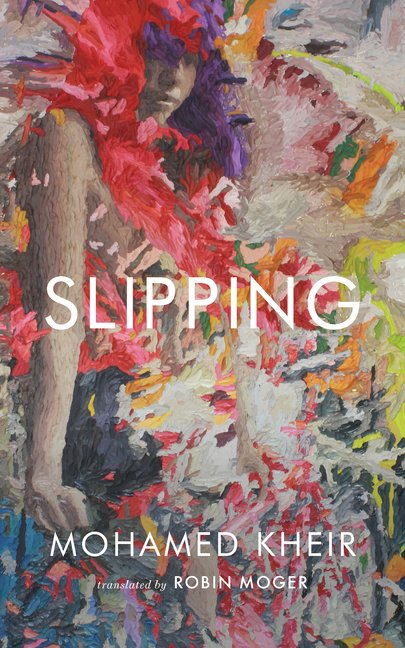
Mohamed Kheir, Slipping
(Two Lines Press)
Slipping is a collection of vignettes that take place as Seif, a journalist, and Bahr, his subject, wander through the psychic and physical landscapes of post-Arab Spring Egypt. I was captivated by their story—which is filled with unexpected twists and moments of beauty—and by Kheir’s dynamic, fluid writing, making it one of my favorites from this year. This translation of Mohamed Kheir’s Slipping (by Robin Moger for Two Lines Press) is the first time his work has been published in English and makes me hope for more. –CS
Alexandra Kleeman, Something New Under The Sun (Hogarth, August 3)
Alexandra Kleeman, Something New Under the Sun
(Hogarth)
A genre-defying novel to leave all other recent genre-defying novels parched and disorientated in the dust, Alexandra Kleeman’s latest is the story of Patrick Hamlin, an East-coast writer—his troubled wife and daughter decamped to an eco-commune in upstate New York—who comes to Hollywood to “consult” on a movie adaptation (starring jaded former teen starlet Cassidy Carter) of one of his books. As Patrick chauffeurs an understandably suspicious Cassidy around Los Angeles (where synthetic hydration aid called WAT-R has replaced good old-fashioned H₂O), wildfires rage in the near distance, sleepwalkers roam the highways, and a shadowy conspiracy slowly begins to reveal itself. Part Tinseltown satire, part California neo-noir, part dystopian eco-horror, Something New Under the Sun is a dreamy, disconcerting marvel by the heir apparent to Don DeLillo. Its beginning will delight. Its middle will intrigue and unnerve. Its ending will trouble your dreams. –DS
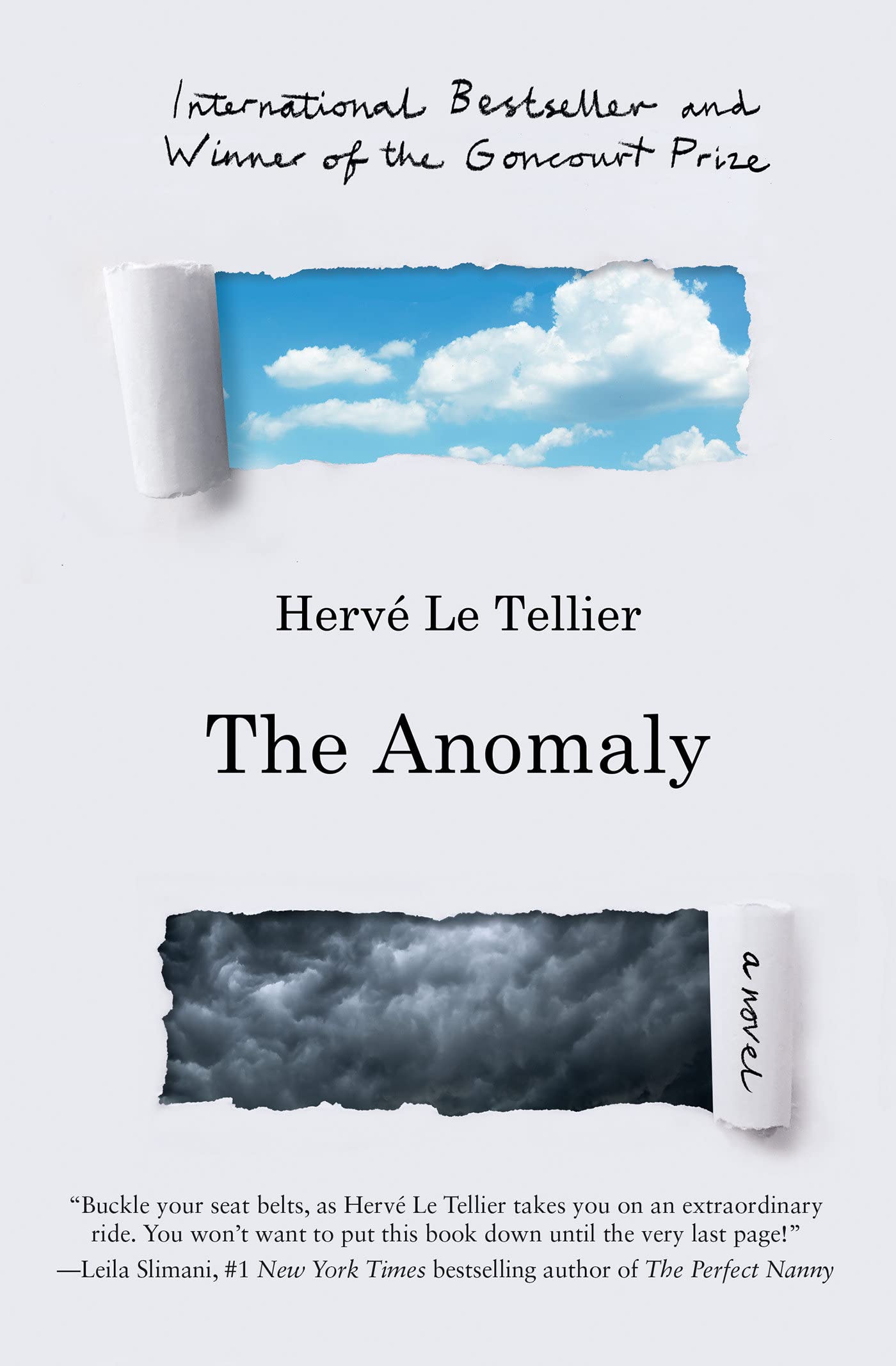
Hervé Le Tellier, tr. Adriana Hunter, The Anomaly
(Other Press)
I love a good high concept novel. In this one, which won the 2020 Prix Goncourt, an international plane goes through some particularly bad turbulence and is—somehow—copied, its passengers (including but not limited to a Nigerian pop star, a contract killer, and an under-sung French writer), suddenly existing in two places at once, is engaging and fast-paced and just a little bit sly—both the story itself and its telling. It’s sort of a thriller, I guess, except that it reads much more like a philosophical experiment, as a bevy of Nobel winners and religious leaders are brought in to try to solve the unsolvable. It’s both extremely fun and existentially distressing! What else do you want in a novel? –ET
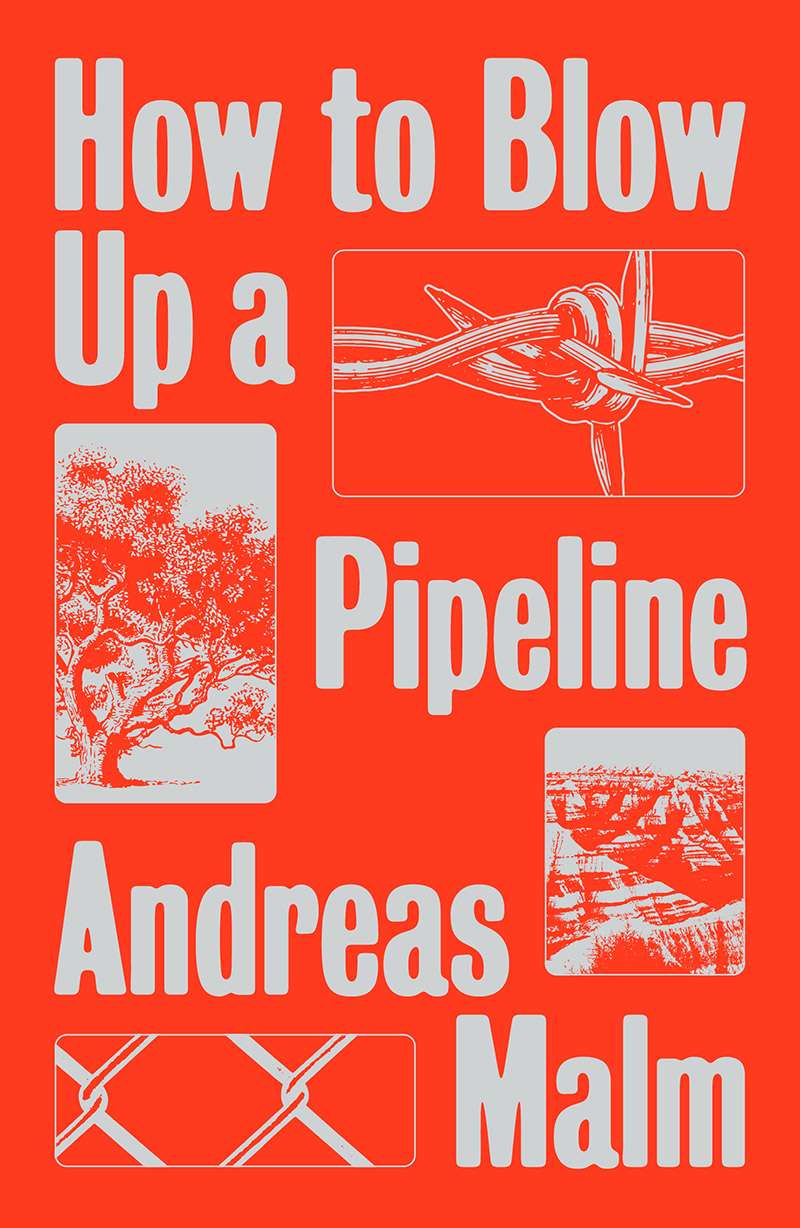
Andreas Malm, How to Blow Up a Pipeline
(Verso)
“Of course the story does not contain any hints on how to actually win the lottery….” Yes, despite the disappointing absence of refinery schematics, chemical formulae, or information on Exxon security guard shift rotations, Swedish climate scientist and eco-Marxist Andres Malm’s incendiary (I had to) treatise on why peaceful climate protest alone is insufficient, and why we must escalate our tactics to include the destruction of fossil fuel infrastructure (pipelines, mind you, not people) if we are to stand any chance of saving the planet, makes an extremely compelling case. Malm dismantles the argument that recent history’s most effective activist movements succeeded only though strategic pacifism, highlighting the vital role that targeted property damage, riots, and the credible threat of escalation played in spooking bad actors and bringing about meaningful change. Ultimately, Malm’s question is this: in the fight against the greatest threat humanity has ever faced, with the world’s most powerful Saruman-ing us toward eco-suicide, how can we afford not to deploy every weapon in our arsenal? CO2 emissions are rising, the clock is ticking, and it’s time to stop playing nice. –DS
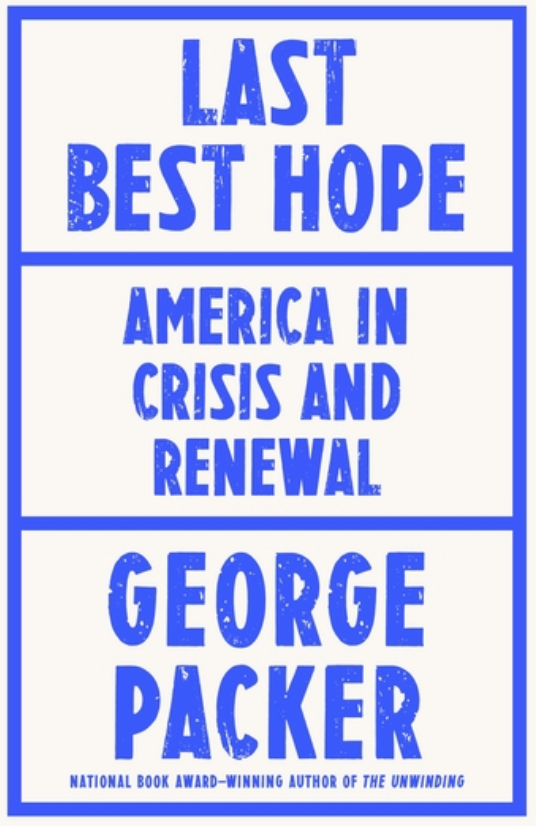
George Packer, Last Best Hope: America in Crisis and Renewal
(Farrar, Straus and Giroux)
George Packer begins Last Best Hope, his diagnosis of America’s cultural and political instability, with a reflection: “What do we see in the mirror now? An unstable country, political institutions that might not be perpetuated, a people divided into warring tribes and prone to violence—the kind of country we used to think we could save.” It doesn’t necessarily get any less bleak from there, but still, this is an engrossing look at the problems our country faces and an interesting set of suggestions for what should come next. Packer’s exploration of what led to the fracturing of American culture and public discourse is clear, insightful, and important, and made for one of the most enlightening books I read this year. –CS
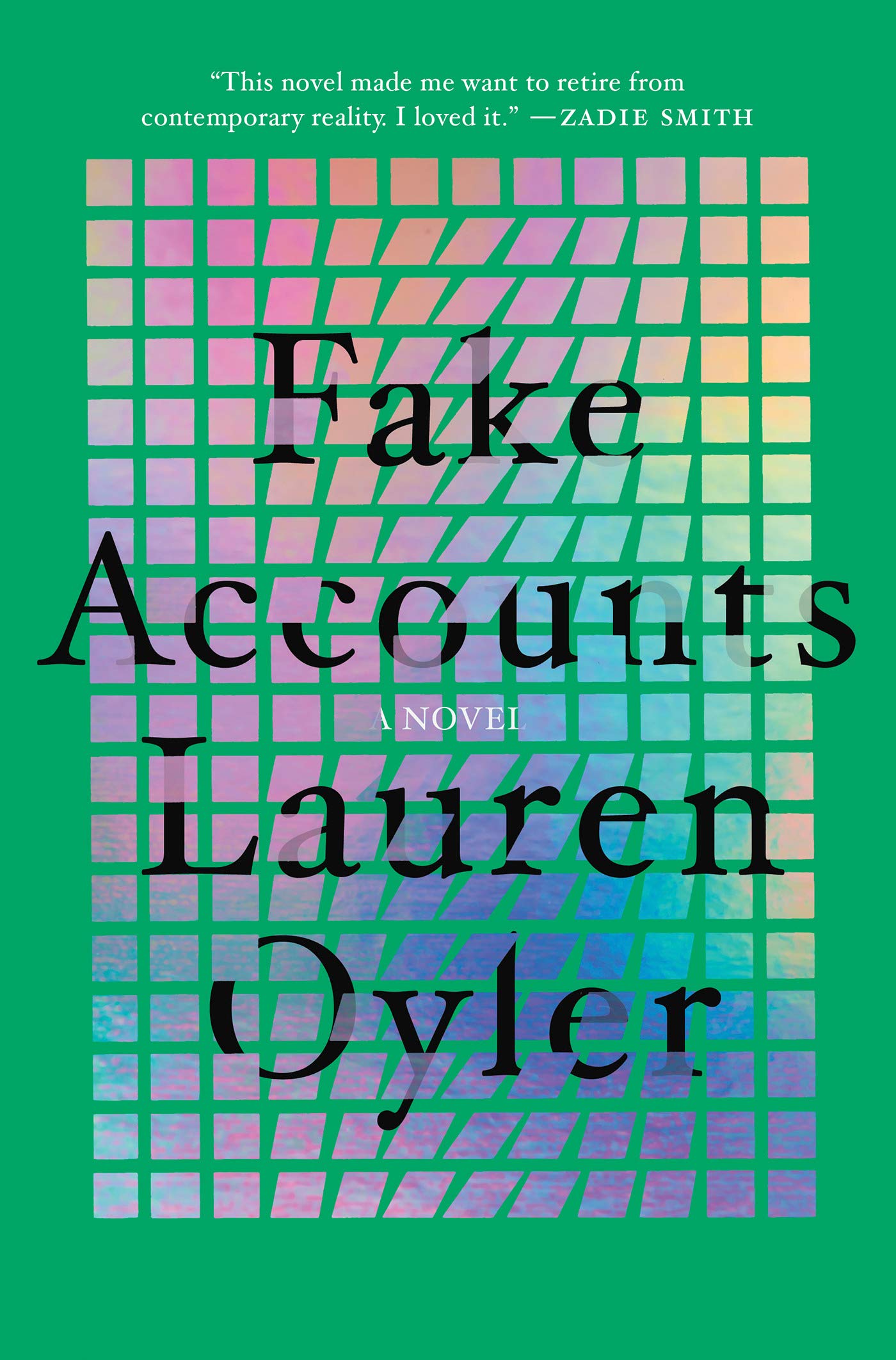
Lauren Oyler, Fake Accounts
(Catapult)
Lauren Oyler’s smart and funny Fake Accounts is an incredibly accurate representation of what it means to be a person who’s online. In typical autofiction, our unnamed narrator is an Oyler stand-in, a writer who leaves New York for Berlin after learning her boyfriend is secretly a popular internet conspiracy theorist. There’s not much plot – as an expat, the narrator has a bizarre strategy to online dating and there’s quite a good twist – but the charm and energy here comes from the whole scale analysis of the way our social media selves exist alongside our reality. That is, how do we relate to ourselves when there is a different self we present online? Anyone familiar with Olyer’s brilliant book criticism will love this self-assured and witty debut. –EF
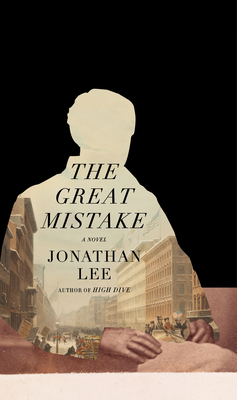
Jonathan Lee, The Great Mistake
(Knopf)
In the opening pages of Lee’s latest novel, 83-year-old Andrew Haswell Green is murdered outside his home. It is 1903, in New York City. Lee then proceeds to explain to us—in lucid, luminous prose—exactly who Green was and why he met such an end. Which doesn’t really cover the pleasures of this novel, which are many: the lithe, surprising sentences, both dignified and playful; the finely wrought character portrait; the well-paced mystery; and the constant sense of discovery, as Lee keeps showing us vibrant new pockets of a world gone—and more broadly, unearths a true forgotten history, because if you don’t know (I didn’t), Green was a real person, a lawyer who is responsible for the creation of much of New York City as we know it, and yet has mostly faded from public memory. I, at least, will not forget him now. –ET
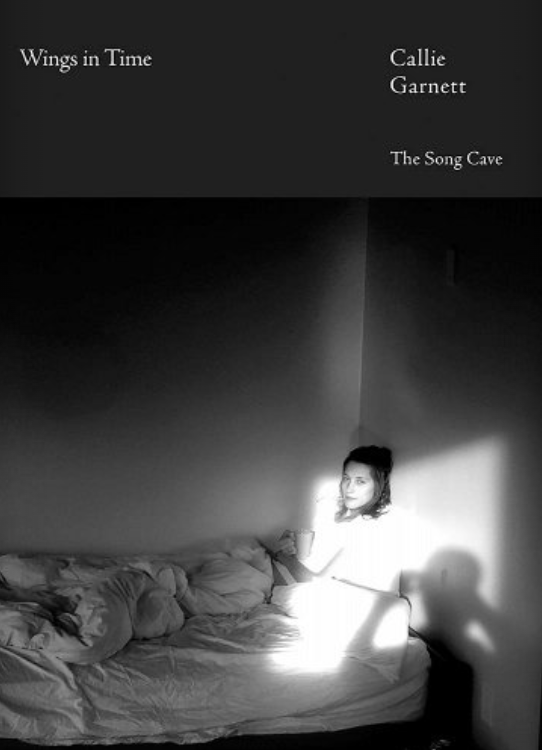
Callie Garnett, Wings of Time
(The Song Cave)
Callie Garnett seems to be watching herself… watch herself. Whether via the incidental digital diaries of our daily Zooms or the rough-cut rear projections of nostalgia’s private screening room, Wings of Time is constantly shifting the view from screen to window to mirror. Or, to take a metaphoric swerve (as this collection so often does, to wonderful effect) Garnett seems like she’s trying to fit all her memories in one place before time runs out, like she’s packing and repacking herself into a suitcase that surely won’t fit everything she needs. Garnett almost seems surprised by the significance of small moments from her past—pacing the aisles of a video store job, the light in an upstate ice cream shop—and encounters them on the page like beloved objects thought lost. In truth, it feels hard to write about the sly power of this collection, feels impossible to isolate the sleight of hand behind its small magicks: Garnett’s language-as-recollection is filled with slippery juxtaposition and impossibly tensile metaphor, shimmering in and out of coherence to create something wholly new and beautiful. –JD
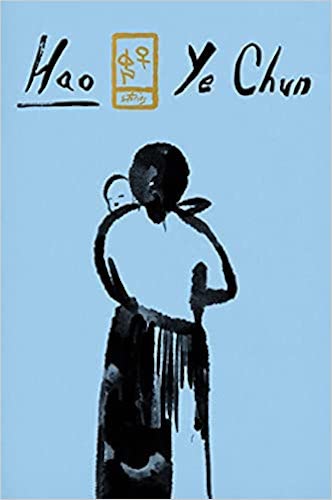
Ye Chun, Hao
(Catapult)
For obvious reasons, 2021 has been a year of heartbreak for the Asian American community. But it’s also been a year of astounding resilience, and the characters you encounter in Ye Chun’s gorgeous short story collection speak to that strength. They are wives and mothers. They are immigrants and graduate students. They are bridges between continents—from China to San Francisco’s Chinatown—and across generations. One woman is hidden away in a small San Francisco apartment during the horrific anti-Chinese riot of 1877. Another watches her books burn and is forced to write “May Chairman Mao live ten thousand years” repeatedly, as punishment. Yes, Hao certainly covers a large swath of history, but Ye Chun masterfully zooms in and makes families the focal point. The beating heart of this collection is the intimacy between mother and child. We are invited into their games and shared rituals. In “Stars,” a doctoral student has a stroke that severely limits her speech; she returns to the building blocks of English, has to re-learn at the same level as her young daughter.
They read A House Is a House for Me and play that pattern out: “What is a window a house for?” the mother asks. “A window is a house for outside,” her daughter decides. And so on and so forth until we get the lines, “Future is a house for everyone.” Future is a house for everyone! There’s something so heartbreaking about that simplicity. It’s pure poetry. Here’s another example: in the title story, “Hao,” the word game between mother and daughter essentially traces the origin of Chinese characters. Did you know the symbol for “good” is written like a woman holding her child? The women in these pages are faced with the most impossible circumstances, but they manage to make a sanctuary of words. Personally, this collection found me and offered refuge at just the right time; maybe it’ll be the solace you’re looking for, too. Hao is a house for us. –KY

Kikuko Tsumura, There’s No Such Thing as an Easy Job
(Bloomsbury)
It seems like “burnout lit” could be its own category these days, but trust me when I say that this is not that. Well, not exactly. Our unnamed narrator is a disaffected millennial, which for obvious reasons is a staple of the genre. But her anxiety and deadpan humor, when combined with the lens of modern Japanese culture and the increasing strangeness (and even supernaturalness) of the gigs—from spying on an author (riveting stuff, as you can imagine) to punching tickets at a haunted public park—make for a quietly engrossing story. Apparently this is the first time Tsumura’s been translated into English—an egregious oversight, and one that I hope is remedied soon. –ES
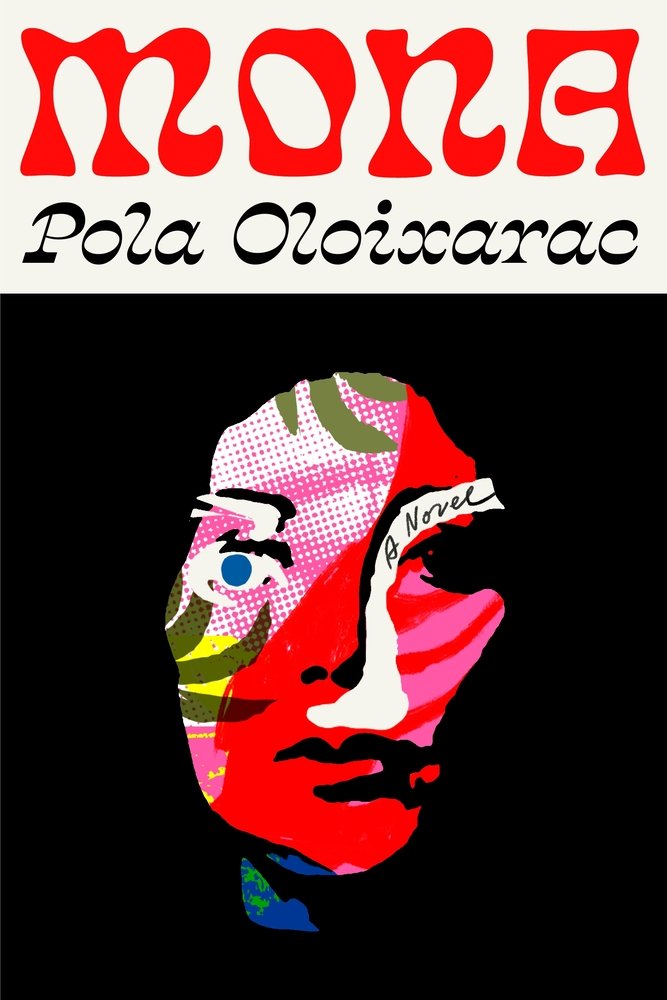
Pola Oloixarac, Mona
(Farrar, Straus and Giroux)
“The festivals are the real novels,” says Mona. When Mona, a Peruvian novelist, is nominated for a major European literary prize, she attends the adjoining four-day literary conference in Sweden and meets the other nominees, each with their own idiosyncrasies, hang-ups, and readymade narratives about their success. Mona starts as a biting send-up of literature, publishing, and identity—My Prizes meets My Year of Rest and Relaxation—but Mona’s hiding something, and a surprising ending renders the question of who will win the prize comically trivial. What happens when writing—ideally a tool to illuminate reality and enfold others—obfuscates reality and blocks out dissenting voices? “[Writers] come to places like these thinking they’re writers,” Mona says, “and end up leaving as characters.” Plus, there’s a Lit Hub mention—can’t argue with that. –WC
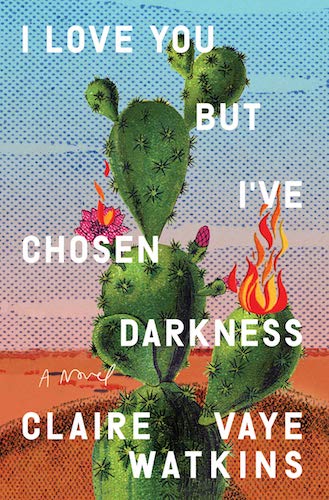
Claire Vaye Watkins, I Love You But I’ve Chosen Darkness
(Riverhead)
For the entirety of I Love You But I’ve Chosen Darkness, my body felt at a slight hum: my heart rate was higher than usual, my mind in a near constant state of disbelief. I have never read anything quite like this book, which takes the term “autofiction” to a new level. The main character is named Claire Vaye Watkins, daughter to Martha and Paul Watkins (infamous member of Charles Manson’s cohort). She has a husband, a child, a couple books under her belt (one well received, one not so much), and a gnawing sense of unease, wrongness, an inability to recognize herself in the story of her life.
“Have I polished my pain well enough for you?” Watkins once responded when asked about Manson roots. The polish is off now; this is one of the most startlingly honest books I have ever encountered. It reads like an autobiography, one told in the moment, the blow by blow of a long-awaited, inevitable reckoning. Years ago, when I found out about Watkins’ life and lineage, I found something to admire in the serenity she seemed to have about it: just a small mention in Battleborn—it was not something she milked or used. But this is a heavy past to carry, one that would inevitably take a toll. At a certain point, and as a writer such as herself, something jagged was going to make its way through the veneer. Now she is looking at the hole that was left, and letting us look too. –JC
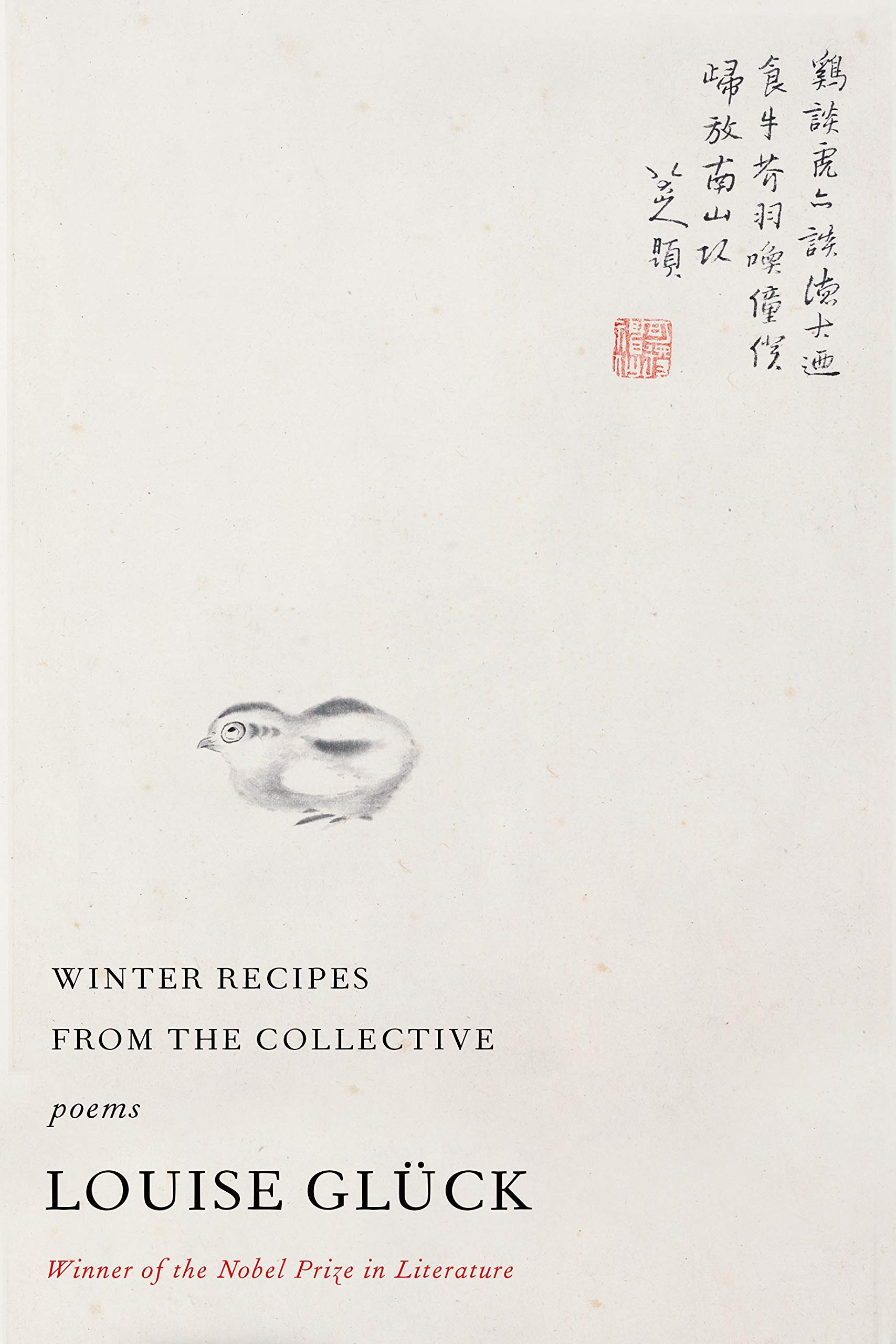
Louise Glück, Winter Recipes from the Collective
(Farrar, Straus, & Giroux)
Winter Recipes from the Collective, Glück’s first collection since her Nobel win, is haunted with the idea and happening of death. It opens with a poem titled “Poem.” Glück writes, “Downward and downward and downward and downward / is where the wind is taking us.” And so we go along with her, as she enters a stratum where uncertainty permeates, and is never placated. If in Proof and Theories (her 1994 book of criticism) she draws attention to “the power of ruins” and how speaking through and with said ruins alludes to a whole they once belonged to, or a whole that is elsewhere, then in Winter Recipes, she speaks through and with uncertainty, alluding to a wide absence—to the things now depleting, now dwindling, and now dead. –SK
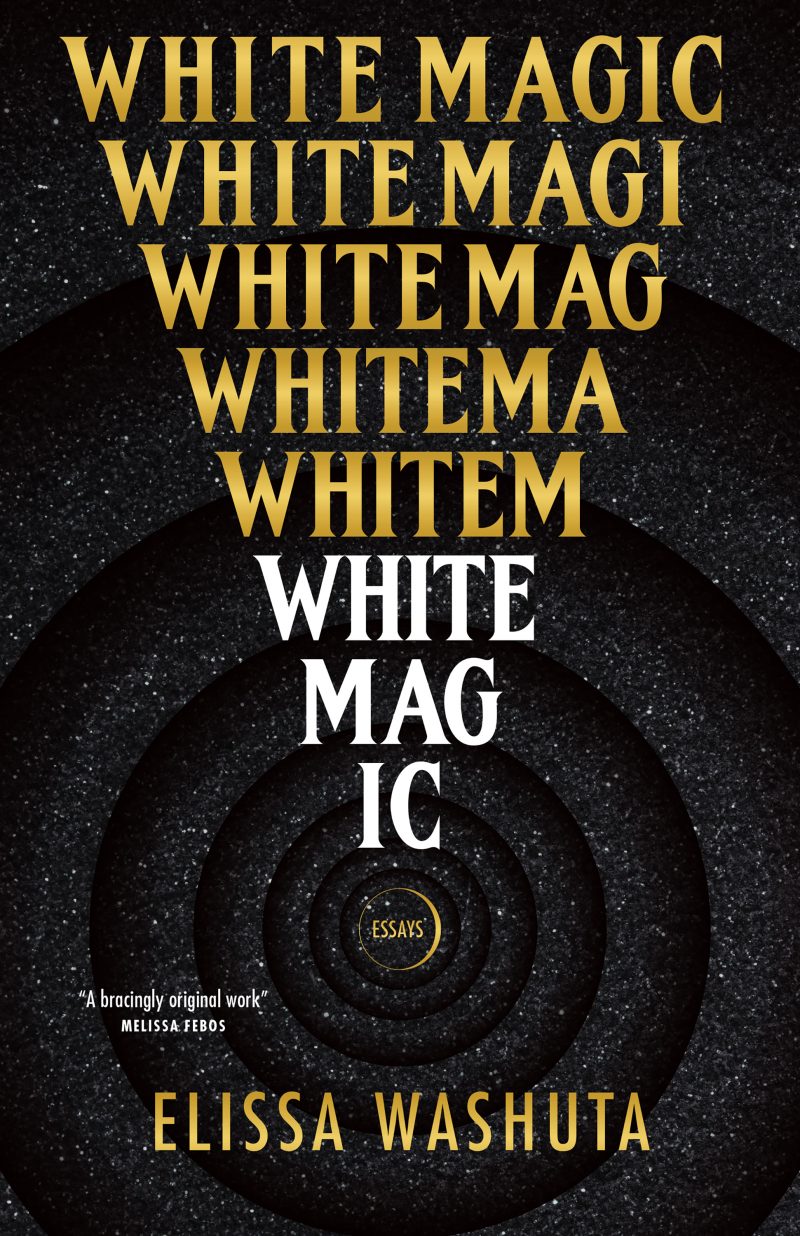
Elissa Washuta, White Magic
(Tin House)
White Magic, an intertwined essay collection by Cowlitz writer Elissa Washuta, is a difficult book to describe, and I’m willing to guess that’s exactly what Washuta intended. It’s a book about colonialism, romantic heartbreak, and the occult; about leaving home and finding a new one; about sobriety and obsession and trauma. It’s also a book that’s aware of being a book: even as she watches Twin Peaks or plays Oregon Trail II or picks her karaoke song, Washuta is looking for answers to her spiraling questions and beckoning, irresistibly, for her reader to follow. –ES
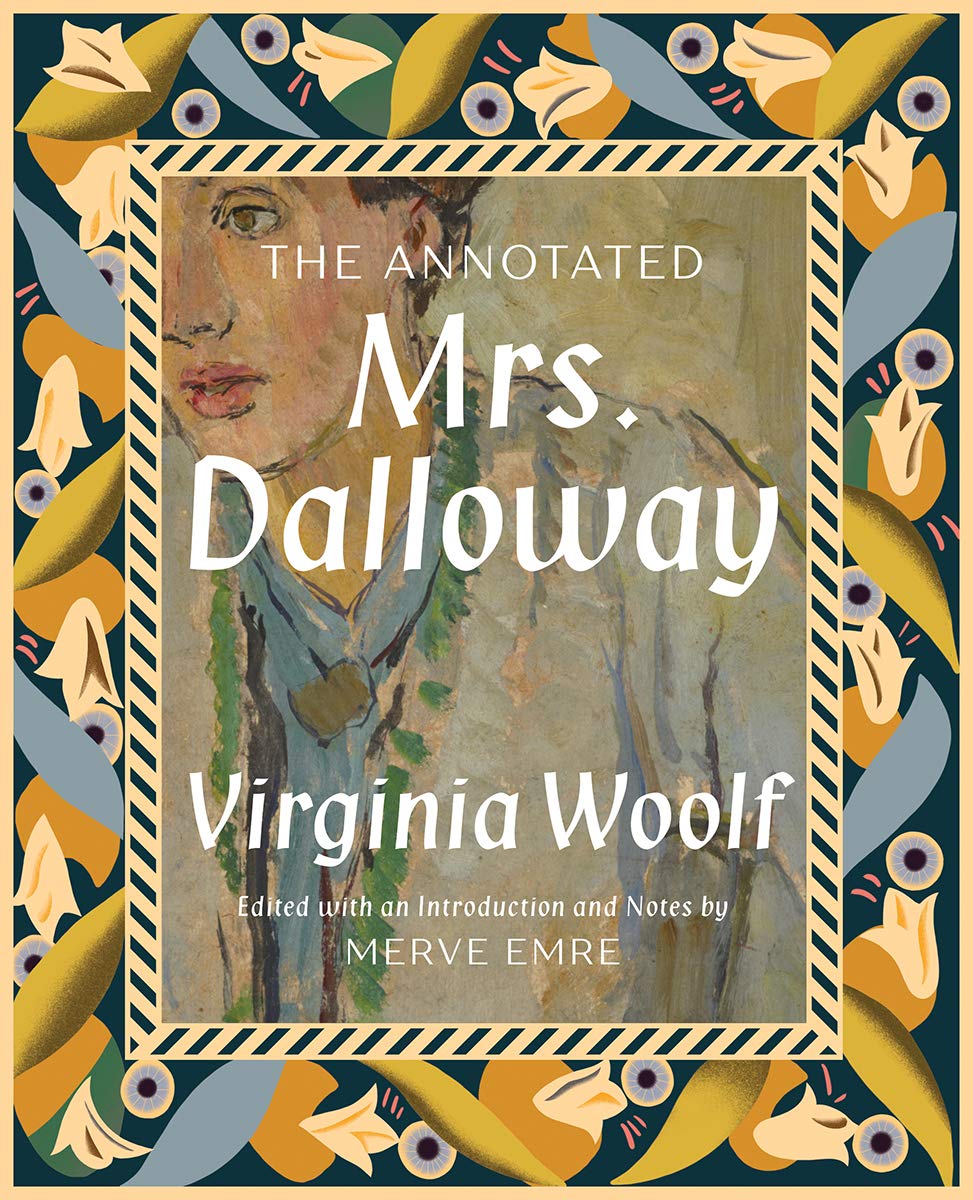
Merve Emre and Virginia Woolf, The Annotated Mrs. Dalloway
(Liveright)
This selection is cheating a bit—yes, I know Mrs. Dalloway wasn’t really published this year—but this new, annotated edition of Virginia Woolf’s masterpiece is worth negotiating some gray areas. You wouldn’t think that it would be possible to make Mrs. Dalloway any better, but author and Oxford professor Merve Emre would prove you wrong. From an introduction that is both engaging and instructive to her hyper-specific notes on the text—which offer surprises for both the newcomer to, and the longtime reader of, Woolf’s work—Emre seems to know exactly what the reader needs. Her writing and scholarship complement the novel perfectly, and both are set against the backdrop of a gorgeously illustrated layout. Reading it is almost as good as reading Mrs. Dalloway for the first time. –CS
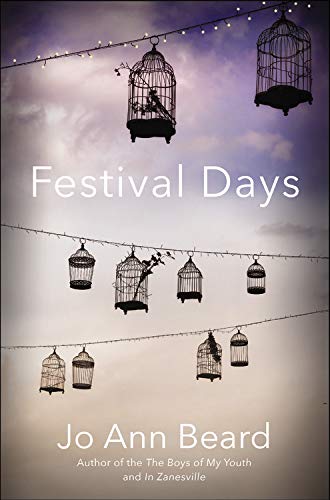
Jo Ann Beard, Festival Days
(Little, Brown)
It’s been so many years since Jo Ann Beard’s perfect collection, Boys of My Youth, and companion novel, In Zanesville, that I’d all but given up hope on a new Beard coming my way. Thankfully this wasn’t true, and even though I’m already anxious for the next, for Beard I would happily wait another twenty years. She is an immense talent, whose work reveals the beauty and brutality in the mundane facts of life, and blends the ideas of life and death, truth and fiction. She’ll set a scene, and knowing Beard, you’re already bracing for impact, for the lines that will go straight to your heart like a punch to the gut. Take this passage, for example, of watching repairmen working on a nearby telephone pole:
Something about the scene, framed behind the glass of the living-room window, embodies what she’s been struggling to understand. It’s momentary, a flash of insight so brief it can’t be seen but must be remembered, like the glimpse of a shooting star. The man with the cleats thrust into the pole, his weight tangible in the leather harness, the dark red of the telephone against the bright yellow of his hard hat, and then the tendril of wire falling away from his pliers—this is the world without her in it.
Beard has grown older, as have we all, and has perhaps grown more existential, perhaps wonders a little more why she strives to find meaning in life, which may in fact be meaningless. I think this struggle is at the core of most necessary art: a sense of the void, and yet, the constant return to the page (or the canvas, or the instrument) and the creation of something that, even if it doesn’t offer an answer, offers meaning in the question. –JC
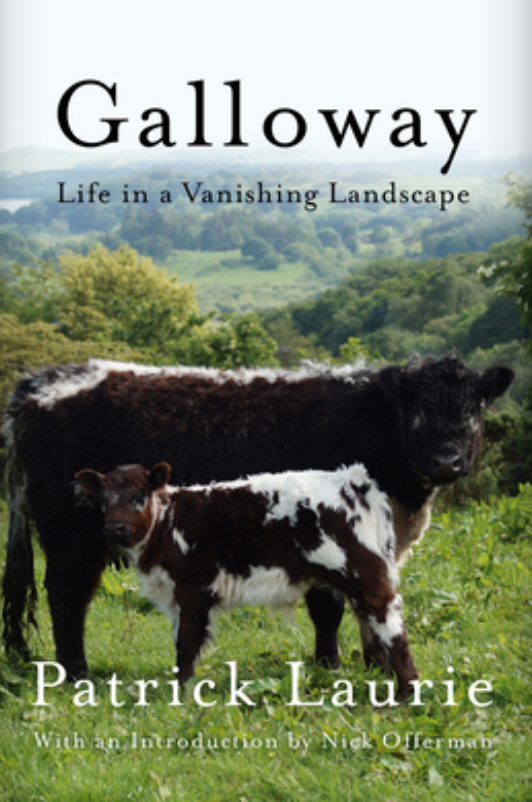
Patrick Laurie, Galloway
(Counterpoint)
Patrick Laurie is a cattle farmer in the southwest of Scotland. More specifically, he and his family tend to a rough and hardy herd of prized Belted Galloways in the rocky hills to which they are adapted, tucked into the unglamorous hinterlands of the county for which they are named. Patrick Laurie is also a deeply sympathetic writer, attuned not only to the details of the world around him—the life cycles of native grouse, the pre-dawn sounds of agitated cattle—but also to the limits of his own optimism. Laurie seems daily aware of the inevitable failure of grand ideas to account for the stripped bolt on an old tractor or the recalcitrance of a stubborn calf, and yet goes on, as if Aldo Leopold had read nothing but Beckett before heading to rural Wisconsin (or as if Paul Kingsnorth had had a little perspective knocked into him by a grumpy ruminant). The tradition within which Laurie is working—think Leopold, Wendell Berry, James Rebanks, and other conscientious diarists of the small farm—is an important one, and this very contemporary account, taking place as it does in the midst of numerous environmental tipping points, is a crucial reminder that tending to the world right in front of us is maybe the best thing we can do. –JD
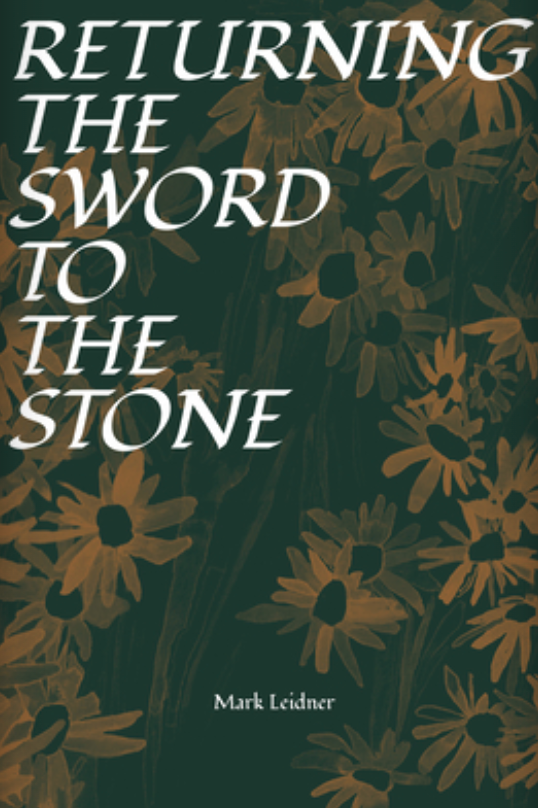
Mark Leider, Returning the Sword to the Stone
(Fonograph Editions)
Reading Mark Leider will make you believe that humor is the most powerful poetic tool. Of course, almost no poets—almost no people—are as funny as Leidner, so you should probably just appreciate the poems in front of you instead of trying to make any grand proclamations about what other poems should be. This is how I felt when reading Returning the Sword to the Stone—grateful for a book so of itself, in which the humor doesn’t deflect truth, it refracts it. The poem “Youth is a Fugitive” begins “that thinks it’s a hostage.” I could go on, endlessly: this is the kind of book that urges relentless quotation, so I’ll restrain myself, except to say that I’m sorry to everyone to whom I texted every line of “I’m Running for President” (the poetry equivalent of the best I Think You Should Leave sketches). I recommend Returning the Sword to the Stone to everyone, regardless of the size of their poetry library. –JG
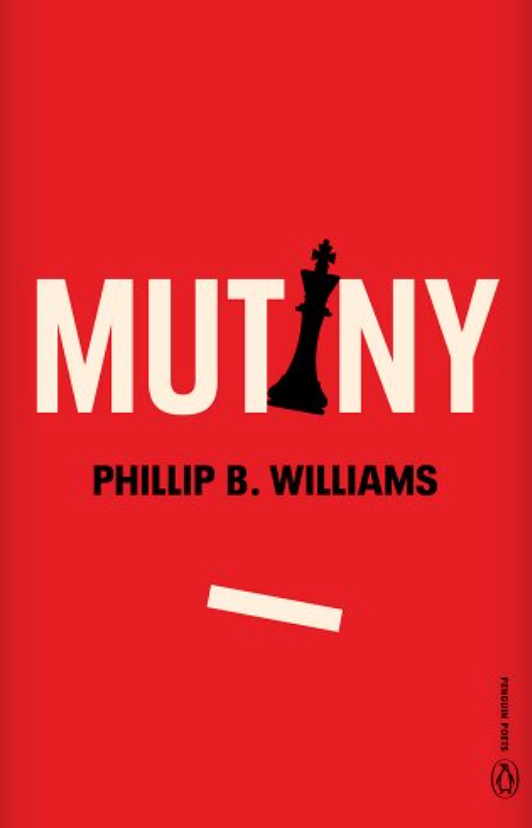
Phillip B. Williams, Mutiny
(Penguin Books)
Phillip B. Williams is one of the most inventive poets working today—at every turn, his writing surprises. Mutiny addresses the injustices of the history and present with declarative, clear, and powerful poems, drawing in images and themes from the African diaspora and spirituality. In addition to holding a dynamic presence on the page, Williams’ lines are so sonically resonant that they demand to be spoken; reading him, I found myself repeating line after line out loud just to hear them. This collection quickly became one of my favorites from this past year and, I’m sure, many years to come. –CS
